Trip Logs
Italy Cruise: Hidden Treasures from Florence to Venice Trip Log: August 18–August 30, 2019

August 18, 2019 | Florence, Italy
We converged on the city of Florence from distant reaches of the planet for the same reason: to embark on a luxury cruise to experience the culture, history and landscapes of Italy. With land borders only in the north — shared with France, Switzerland, Austria and Slovenia — Italy’s extensive coastline is perfectly suited for exploring by ship. In fact, we looked forward to doing just that aboard beautiful ‘Le Bougainville.’
We convened at The Westin Excelsior, Florence. The hotel is situated on Piazza Ognissanti, perched right on the north bank of the Arno River, which bisects the city. After settling into our rooms, we wandered the bustling streets lined with leather shops and wine bars. Some of us walked farther afield to see the river from Ponte Vecchio, a medieval stone arch bridge noted for still having shops built along it, as was once common. The current tenants are jewelers and art dealers, though originally, the spaces were occupied by butchers.
A welcome cocktail party had been arranged for the evening’s entertainment. We socialized over Champagne and canapés and met some of the Abercrombie & Kent Expedition Team members who would accompany us throughout our voyage. After Expedition Director Suzana Machado D’Oliveira went over the logistics for our time here in Florence, we left to watch the sunset and feast on Tuscan delights at one of the many quaint sidewalk cafés. We then headed to bed in anticipation of our first day of exploration.

August 19, 2019 | Florence
We awoke well rested as the morning sunlight reflected off the earth-tone buildings that line the placid Arno River. After breakfast, we gathered our headsets and belongings and set out to explore the city on a variety of tours.
Some of us drove into the countryside for an expedition with two truffle hunters and their wonderful dogs. We enjoyed a brief introduction to these mysterious fruiting bodies of subterranean fungi — a.k.a. mushrooms — and headed into the field to follow the dogs as they, in turn, followed their incredible noses. Soon, we found ourselves wandering through a forest as the dogs detected and unearthed a number of these delicacies. The hunters explained that they trained the dogs by putting bits of truffle into plastic Easter eggs and burying them in the forest’s leaf litter.
Next, we gathered together for a delicious lunch made of everything truffle, including truffle honey, truffle on eggs, truffle pasta and even an ice cream dessert with truffle.
Others drove up a scenic hillside overlooking the city, with its towers and steeples visible below. There lay San Miniato al Monte, often described as one of the finest Romanesque structures in Tuscany, incorporating rich black and white marble paneling along with a timber truss roof. Yet another delightful moment, we took a stroll to a coffee shop and snacked on sweet pastries.
Back in the city, our group visited Duomo di Firenze (Florence Cathedral), the city’s most iconic landmark. We admired the pink, green and white marble façade before entering the museum, where we saw Michelangelo’s stunning Pietà, sculpted when he was almost eighty years old. After a sweet and savory lunch of melon and prosciutto, we stopped by the bronze statues around Piazza della Signoria.
Others came upon the historic Officina Profumo-Farmaceutica di Santa Maria Novella, a pharmacy dating back to the Dominican friars of 1221. We browsed its fragrances, dried botanicals, alcoholic elixirs and medicines made from plants. From there, we visited Piazza Strozzi and relaxed at a café over an espresso. We then explored Palazzo Vecchio, which for a time served as the Medici family’s primary residence. A symbol of civil power for Florence, Palazzo Vecchio now showcases Roman ruins, a medieval fortress, and amazing Renaissance chambers and paintings.
After freshening up back at the hotel, we drove through vineyards and olive groves to the spectacular Artimino Villa, perched high on a hilltop in the Tuscan countryside. We mingled on the grounds over cocktails, watching an impressive flag-throwing performance as the sun began to set. Inside the villa, we feasted on a sumptuous gala dinner, topped off by a recital performed by three tenors from the Florence Opera. It was a memorable finale to a delightful day.

August 20, 2019 | Florence, Pisa & Lucca
We had breakfast this morning and checked out of our beautiful Florence hotel, on its little square on the Arno River, and set out to explore Tuscany. Some of us chose to spend the day immersed in Florence’s artwork, starting off at the Uffizi Gallery, home to an assembly of masterpieces that includes paintings dating back to the Middle Ages through the early 18th century. Located adjacent to Piazza della Signoria in the city’s historic center, Uffizi is one of the largest, best-known and most-visited museums in the world. Within its walls, we were graced with such classic artworks as Botticelli’s Birth of Venus and Caravaggio’s Medusa.
Later, we paid a visit to Galleria dell’Accademia, founded in 1563 as the first school established in Europe specifically to teach drawing, painting and sculpture. Best known as the home of Michelangelo’s sculpture David, it also houses a large collection of paintings by Florentine artists, mostly dating from 1300 to 1600.
Others headed to the charming city of Lucca, famous for its intact Renaissance-era walls. Initially built as a rampart, these walls now function as a pedestrian and bicycle promenade and are also popular with picnickers. We strolled the narrow cobblestone streets, including Via Fillungo with its mix of shoe stores and food boutiques, the latter of which filled the air with the aromas of coffee, truffles and pesto. Here, we saw Saint Michael’s Church, a Roman Catholic basilica built over an ancient Roman forum.
We also wandered through Piazza dell’Anfiteatro, an urban square that followed the elliptical shape of the former second-century Roman amphitheater. At its peak, the theater had 18 rows of seats and housed 10,000 spectators; it’s now lined with outdoor cafés that spill into the piazza. Next, we visited Lucca Cathedral, the construction of which was initiated in AD 1063 by Bishop Anselm (later Pope Alexander II).
Some of us opted to visit Pisa, home to the famous Leaning Tower of Pisa. The city was originally founded on the shore of the Tyrrhenian Sea, but due to the alluvial sediments deposited from the Arno and Serchio rivers, the shore moved westward, and Pisa is now six miles from the coast.
We took a trolley ride to the pedestrian historic center. It was here we could appreciate the Square of Miracles, recognized as an important center of European medieval art and one of the finest complexes in the world. Some of us stopped by the Pisa Cathedral and made our way to the top of the Leaning Tower of Pisa. The ivory tower began to lean even during its construction in the 12th century due to the soft ground that could not properly support the structure’s weight, but was reinforced between 1993 and 2001 to alleviate the tilt. Late in the afternoon, we arrived at the dock and were warmly greeted aboard ‘Le Bougainville’ by the ship’s crew. We settled in and gathered in the theater for a safety briefing. Before dinner, Cruise Director Paul Carter gave us an overview of the ship, and the A&K lecturers told stories about themselves and their passion for this fascinating part of the world.
Following a relaxing dinner on our new home away from home, some of us gathered in the main lounge for a cocktail, while others headed to bed for a good night’s sleep.

August 21, 2019 | Bastia, Corsica, France
This morning at sunrise, ‘Le Bougainville’ pulled alongside the pier in the port city of Bastia on the French island of Corsica. The island’s impressive mountainous interior was visible off the port side of the ship, looming high above the city. Corsica, the fourth largest island in the Mediterranean, was part of the Republic of Genoa beginning in the late 13th century. On a clear day, it is possible to see Italy’s coast in the distance. Owing to this fact, the island provided a strategic advantage to whomever occupied it, as they could control trade and ship movements rather easily.
Getting an early start to beat the heat, we drove to the top of the mountain. From this rocky vantage point, we looked out over the sparkling Mediterranean Sea on one side of the island and the Tyrrhenian Sea on the other. We hiked through maquis, the low Mediterranean scrub dominated by heaths and arbutuses, with a sprinkling of wild oregano, lavender and other perfumed herbs. Farther along, we reached a stone house used centuries ago during the process of transferring snow from the high mountains to the port of Bastia to make ice.
The rest of us set off to explore Bastia, starting in the lower area near what is known as the “port de commerce,” or new port. In the main square, we viewed the surrounding architecture as swifts darted back and forth overhead. One of the statues depicts a mother sending her young son off to war. During both World Wars, this was common practice, and generations of Corsicans were lost, upending what was then a largely agricultural society.
We wandered the narrow streets, exploring several churches along the way. At the central market square, we learned about Corsica’s endemic wildflowers and the important role they play in the production of the island’s unique honey. Interestingly, these plants are found nowhere else in the world. Afterward, we passed through the Vieux Port (French for “Old Port”) — full of fishing boats and pleasure boats and lined with restaurants and cafés.
Walking uphill, we arrived at the Citadel, constructed in the 15th century by Genoese governors to protect the land and denizens below. Inside, we encountered a maze of narrow, winding alleyways, along with a church, where we enjoyed a magical performance of traditional Corsican polyphonic singing. We got chills down our spines as the beautiful tones reverberated off the high domed ceiling.
Once the performance had concluded, we explored the Citadel’s museum and headed to the roof for an al fresco lunch with local wine and small plates. The view over the old and new ports was stunning. Afterward, many of us sampled the renowned local Cap Corse aperitif at the Mattei Shop. The drink gets its name from Louis Napoleon Mattei, who in 1872 established this company at the base of the Cap Corse peninsula.
Back on the ship, we watched a spectacular sunset on the back deck during Captain Thomas McCandless’s Welcome Aboard Cocktail Party, where we mingled over Champagne and were introduced to some of the ship’s officers. This was followed by a festive dinner and a nightcap in the bar.

August 22, 2019 | Rome, Italy
Early this morning, the Captain maneuvered ‘Le Bougainville’ into the port of Civitavecchia. A hearty breakfast was served, and then we boarded coaches for our day journey into Rome accompanied by our exceptional local guides.
Upon arrival, we fanned out to dive deeper into this extremely culture-rich city. Those of us seeking an intimate experience crossed the Tiber River and arrived at the Trastevere district. On this feast day of the Assumption of the Virgin Mary, the people- watching proved to be incredible, and we took a break at a café for an espresso or gelato to watch the city go by. We strolled the cobbled streets on our way to a local restaurant for lunch, where the proprietor stuffed us with pasta. He also proudly displayed photographs of celebrities who had visited his restaurant over the past 50 years, including a young Muhammad Ali.
We discovered one of Rome’s best-kept secrets, the suitably fortified Villa Farnesina. Completed in 1510 for Agostino Chigi, treasurer to Pope Julius II, every surface was painted with frescos by Raphael, Michelangelo and other Renaissance masters. The ceiling featured extravagant allegorical scenes, and by the end of our visit, we had sore necks from looking up.
Others had a more culinary-themed day, and we made our first stop at Campo de’ Fiori market, where we explored stalls featuring local produce and tiny shops proudly selling cured meats, baked goods, liqueurs and oils. We enjoyed a few samples and made our way to a cooking school, where we donned aprons and made lunch preparations.
The chefs shared secrets for creating zesty spinach cavatelli, along with a simple but flavorful sauce of red onions, garlic and fresh cherry tomatoes topped with a parmesan crisp. Once the meal was ready, we toasted our efforts with a chilled and refreshing Prosecco and settled in to enjoy the fruits of our labor.
Others went on a walking tour that focused on some of Rome’s most important squares and fountains. At Piazza Navona, we admired the Fountain of the Four Rivers — designed in 1651 for Pope Innocent X — with its Egyptian-style obelisk at the top. Our next stop was the Pantheon, one of the best-preserved of all ancient Roman buildings. Almost 2,000 years after it was built, the Pantheon’s dome is still the world’s largest nonreinforced concrete dome.
Before lunch at a cool and quiet restaurant, where the pizza and pasta were equally delicious, we stopped at Trevi Fountain, the largest Baroque fountain in the capital city. This fountain marks the endpoint of one of the aqueducts that supplied water to ancient Rome. Our final stop was Palazzo Colonna, a palatial block of buildings that has belonged to the prominent Colonna family for over twenty generations. The frescoed walls and countless oil paintings were magnificent.
We passed under the gaze of marbled statues as we stepped into Vatican City, the independent city-state surrounded by Rome. Within these walls, we toured the religious and cultural sites of the Vatican Museums, St. Peter’s Basilica and the Sistine Chapel, which featured some of the world’s most famous artworks.
Later, we visited the Jewish ghetto, the oldest Jewish community in all of Europe. An enclave of restaurants, churches, synagogues and shops, this neighborhood witnessed one of the most heart- wrenching episodes of Nazi occupation during World War II. We walked by the brass cobblestones, engraved with the memorials of victims of the Holocaust — a haunting reminder of that dark and horrific time.
Our final stop was the ruins of the Theater of Marcellus, an ancient open-air theater built in the late years of the Roman Republic, where locals and visitors could gather to enjoy song and dance.

August 23, 2019 | Stromboli & Lipari
We awoke to open ocean in every direction, with calm conditions and sunny skies the order of the day. Some of us were up early for a stretching class on the top deck, while others took the liberty of having a bit of a lie-in after our busy day in Rome.
Everyone enjoyed a leisurely breakfast out on deck and then joined lecturer Bishop Richard Chartres in the theater for his presentation titled “Around Italy: An Aperitif.” We learned that Italy as we know it was established in 1871. Bishop Richard discussed some of the happenings that influenced its establishment, as well as how the discovery of the New World influenced the mindset of the people.
After some time on deck scanning the sea for dolphins, we returned to the theater for lecturer Simon Rickard’s talk “Black Diamonds: All About the Enigmatic Truffle.” He explained the biology of these mysterious mushrooms, their habit of growing around the roots of various tree species and how the dispersal of the next generation is accomplished by attracting animals that eat this fungus.
The solo travellers among us gathered for a get-together in the Observation Bar with some of the A&K Expedition Team. Lunch was served, and once we had finished our meal, some of us met with photo coach Richard Harker to learn more about what our cameras (and smartphones) could do.
During the midafternoon, we gathered on deck with Champagne for our approach to the Aeolian Islands and, more specifically, the island of Stromboli — one of the world’s most active volcanoes. We could see eruptions every few minutes, with plumes of smoke rising above what is known as Sciara del Fuoco, or “Stream of Fire.” Occasionally, rocks tumbled down the steep volcanic scree slope, sending clouds of fine ash into the air that descended toward the sea.
Stromboli is said to have been the inspiration for J.R.R. Tolkien’s Mount Doom, the continuously erupting volcano in Middle Earth, where Frodo was sent to destroy the One Ring. As ‘Le Bougainville’ passed closely along the flank, we could hear loud and powerful bellows from the core of the mountain, and in that moment, it was easy to see how Tolkien became so inspired.
During the late afternoon, our superb lecturer Luca Zavagno gathered us back in the theater for the final enrichment lecture of the day, “The Sign of Three: Sicily Between the Byzantines, the Arabs and the Normans.” Luca spoke about how Sicily has long been a crossroads of civilizations — and therefore a hot spot of conflict — but is also a place where art, architecture and language reveal influences from these various rich cultures.
Suzana presented a briefing regarding tomorrow’s activities. Afterward, we had an early dinner and boarded tenders headed for Lipari, the largest of the Aeolian Islands. We went ashore in the town of the same name, explored the shopping streets and wandered to the citadel, which was very peaceful and beautifully lit at night. As tomorrow was the festival of the patron saint Bartholomew, the town was alive with families enjoying the summer evening.
The lights of ‘Le Bougainville’ were warm and welcoming as we arrived back by tender at the marina.

August 24, 2019 | Palermo, Sicily
This morning, we arrived in Palermo, the capital of Sicily, located on the island’s northwest coast. Sicily, the largest island in the Mediterranean, is separated by a stretch of only 1.9 miles of water from mainland Italy. We awoke with anticipation, eager to explore the island over the next two days.
Some of us set off into the Sicilian countryside, passing impressive limestone outcrops in the mountains, and olive groves and vineyards in the valleys. We stopped at a small café overlooking the stunning coastline below and sipped our espressos with views of the Tyrrhenian Sea stretching out in front of us.
Farther up the mountain, we arrived at historic Erice, a fairy-tale hilltop town of narrow cobblestone streets, wrought-iron balconies, and shops specializing in ceramic tiles and woven rugs. We sipped an aperol spritz at a café and did some shopping before gathering at a famous pastry shop owned and operated by a woman named Maria Grammatico. She greeted us there and doled out pastries, which we washed down with a local fortified dessert wine called Marsala. After lunch in the company of two sleepy dogs, we explored the archaeological site of Segesta with its magnificent Doric temple built around 420 BC.
p>Others spent the day with Duchess Tomasi, whose father-in-law was the world-famous author of the novel The Leopard. She hosted us for an authentic Sicilian cooking experience at her fabulous 18th- century palazzo by the sea. She took us first to the market, where we shopped for ingredients with the help of two English students she was hosting for the summer. Everyone gathered the final touches from her garden, and we set off to prepare lunch. Then, we sat down and were welcomed by white-clothed servers who presented the meal in a gorgeous setting. Many of us purchased mezzalunas (herb-chopping utensils) after having had the chance to become well practiced with one while helping to prepare this delicious lunch.
Some of us spent the day exploring the heart of Palermo. We enjoyed a behind-the-scenes look at Teatro Massimo, the largest opera house in Italy, renowned for its perfect acoustics. It was the fourth-largest opera house in Europe at the time of its construction, after those in London, Paris and Vienna. From there, we stopped by a local café, where we sampled granita, a semifrozen dessert made from sugar, water and fruit. Served with brioche, it was mixed with ingredients ranging from pistachio to lemon to coffee, and it proved to be the perfect snack on a Sicilian summer day.
During the walking tour, we passed by the Quattro Canti (Four Corners) right in the heart of Old Palermo. We also visited La Martorana, a cathedral on Piazza Bellini, part of a diocese that includes the Albanian communities. The church is renowned for its spectacular interior, dominated by a series of 12th-century mosaics executed by Byzantine craftsmen. We admired the intricate artwork and took in the general grandeur of the place. The visit to the Martorana church was brought to life by comprehensive insight from Luca. Following the tour, some of us explored Palermo on our own, stopping at one of the many inviting restaurants for lunch or a midafternoon cocktail.

August 25, 2019 | Catania, Taormina & Mount Etna
Under a clear blue sky, ‘Le Bougainville’ dropped anchor just off of the resort town of Giardini Naxos. During the morning, the sky was dominated by the spectacular summit of Mount Etna, the highest active volcano in Europe, topping out at nearly 11,000 feet. The tallest mountain in Italy after the Alps, it spewed a constant jet of steam high above the remaining landscape.
One group boarded 4x4 vehicles to explore the volcano itself. We stopped at a café with a sweeping vista, where bicyclists and motorcyclists took a break from their scenic ride on the volcano’s lower slopes. From there, we went off-road for a walk on the lava flow set down during the 1991–1993 eruption that lasted 473 days. We encountered a placard honoring Rosario di Carlo who, using his bulldozer to push the lava, managed to construct a lava wall that blocked the burning river.
We then donned helmets and descended into an old lava tube, which formed when lava cooled on the surface while a stream of molten lava flowed underground. We hiked through birch forest onto a cinder cone, only to be greeted by a torrential downpour. Adding to the experience, a thunderstorm came during lunchtime.
Some of us also headed toward Mt. Etna, discovering the hilly countryside along the way before arriving at a local winery for a visit. We learned about the peculiarities of the soil, climate and grapevines grown in the region before an enjoyable wine tasting.
Others skirted the base of Mama Etna, as locals call it, en route to the handsome seaport of Catania. Walking along the wide boulevards — which were reconstructed after a catastrophic earthquake in 1693 — we saw extraordinary examples of Sicilian Baroque architecture, including the cathedral dedicated to Catania’s patron saint, Agatha. The cathedral was reconstructed in black basalt dressed in contrasting white sandstone. Inside, the organ filled the great vaulted space with music.
At a café in the cathedral square, we sampled granitas and pastries made of Sicilian produce (almonds, pistachios, lemons and wild strawberries), as well as the island’s famous ricotta-filled cannoli. Travelling well beyond the city, we arrived at Il Biviere, a farm owned by an offshoot of the Borghese family. We were treated to lunch inside the family villa, which is filled with antiques and artwork. Afterward, we strolled around the lush gardens and admired the collection of palms and Mediterranean climbing plants from around the world.
Some of us journeyed to Taormina, perched high above the first Greek colony established in Southern Italy (Giardini Naxos, where our ship docked). Taormina is a city boasting more than two millennia of history. From the marble seats of its dazzling Greek-Roman Theater, we took in the mesmerizing beauty of Mt. Etna erupting in the distance, just as people have for thousands of years. We walked over the same streets used by civilizations throughout history, gazing upon the Aragonese, Norman palaces and the Byzantine icon of the Virgin Mary.
In the evening, we donned our smart attire for a gala dinner in the garden of a breathtaking Sicilian villa called Castello degli Schiavi. Live music accompanied dinner as we observed the building and grounds that served as one of the set locations for the famous crime drama The Godfather.

August 26, 2019 | At Sea: En Route to Puglia
We slept like logs last night in anticipation of a relaxing day at sea as Captain McCandless maneuvered ‘Le Bougainville’ around Italy’s “heel.” Some of us were motivated to get up for an early morning Pilates class out on deck, while others determined their time was best spent along the ship’s railing taking in vistas of the expansive Ionian Sea.
Later, we joined lecturer Rich Pagen in the theater for the first presentation of the day — “Dwarf Elephant Herds and Vigilant Migrating Birds: The Land and Sea Realms of the Mediterranean.” He shared some natural history stories from the region. We learned about Eleonora’s falcon, a bird of prey that nests on islands during autumn migration and takes advantage of exhausted songbirds attempting to make the long journey south across the Mediterranean Sea. It was a fascinating look at how geography and biology have impacted the development of culture in the region.
We enjoyed a cup of tea and returned to the theater for Bishop Richard’s lecture “Frederick II: Stupor Mundi.” He talked about Frederick II, a 12th-century Holy Roman Emperor nicknamed Stupor Mundi, which translates to “Wonder of the World.” Bearing a particularly apt moniker, the emperor was the legitimate heir of two royal dynasties — the Norman and Hohenstaufen — and was renowned for his ability to interact with different cultures, namely the Arabs and the Byzantines.
After sharing stories about our time in Sicily over lunch, some of us enjoyed the remainder of the afternoon on deck with a book, while others allowed the gently rolling sea to rock us to sleep. Then, Simon gathered everyone together for his presentation “Grape, Olive, Fig and Lemon: The Journeys of Four of Italy’s Favorite Plants.” From the development of citrus varieties by hybridizing existing species to the explanation of the amazing (and unlikely) pollination relationship between figs and fig wasps, he introduced us to fruits that are central to Mediterranean culture.
Next, we had to choose between two somewhat opposing activities: afternoon tea or an Aqua Fit class in the pool on the back deck. Afterward, we made our way to Richard Harker’s photography lecture titled “What Italian Artists Teach Us About Composition.” Using examples from classic paintings found throughout the region, he talked about some of the classic rules of composition and encouraged us to break those rules when we felt it was necessary.
After a recap consisting of Luca’s overview of the role played by Byzantine politics, culture and religion in medieval Italy — along with Rich’s highlights from yesterday’s rainstorm expedition on Mt. Etna — we savored a lovely dinner on board. This was followed by an amazing song-and-dance performance in the theater called Magic Golden Musicals. Then, we enjoyed a digestif in one of the bars before heading off to bed to rest up for our first stop on Italy’s east coast tomorrow.

August 27, 2019 | Manfredonia
This morning, the ship came alongside the dock in the port city of Manfredonia, where we set off in various directions to explore this area around the “spur.” The region is known for the limestone mountains that rose high above the gently curving coastline.
Some of us headed up the mountainside into Gargano National Park. We started our hike from the Abbey of Santa Maria di Pulsano, founded in the late sixth century on the ruins of an ancient pagan temple. Then, we hiked down a steep trail cut into the limestone rock, with cables and handholds that made the journey down relatively easy. We reached the tiny hermitage of St. Nicholas in a wide cave that opened to the east. Inside was a small stone altar, large Greek crosses carved into the walls and several beautiful yet deteriorating frescos.
We also hiked along a wide track with spectacular views of the eroded valley below. In the company of a friendly kitten, we watched wall lizards scatter across the cliff and came across an assortment of fascinating insects. These ranged from perfectly camouflaged grasshoppers to orb-web spiders awaiting the arrival of their next meal that would wander haplessly into the arachnid’s sticky trap.
Others drove through olive groves and native Mediterranean vegetation to reach Castel del Monte, a 13th-century citadel and castle situated on a hill. The imposing structure is protected as a UNESCO World Heritage Site and appears on the Italian version of the 1-cent euro coin.
Our group boarded a public bus from the parking area for a rather short get-to-know-your-neighbor ride to the castle grounds. We explored the interior, quickly recognizing that the fortress was an octagonal prism with a tower at each corner. We were impressed by the distinct marble columns of coral and gray, along with the advanced plumbing system, which used rainwater for the toilets and bathroom.
We took a scenic drive through the countryside, which was filled with thousands of olive trees, and arrived at the hilltop of the Catholic sanctuary. A short walk through the gorgeous whitewashed town brought us to the oldest shrine in Western Europe, dedicated to the archangel Michael. We entered the Sanctuary of Monte Sant’Angelo, an important pilgrimage site since the early Middle Ages. We joined a brief mass in the cavelike chapel and continued our walking tour. Afterward, we purchased some local almonds and dried pasta.
Back on board, we relaxed over lunch while Captain McCandless brought the ship close to the amazing limestone cliffs up the coast north of Manfredonia. Uplifted by geologic forces and subsequently eroded by rain and the sea, these rock faces are a whitish-gray color, which contrasts beautifully with the greens of the shrubby vegetation.
We joined Bishop Richard in the theater for his presentation “La Serenissima: Venice and Her Empire.” He discussed the 1,000-year history of the Most Serene Republic of Venice, known traditionally as La Serenissima. Founded by refugees from Attila the Hun’s invasions of Northern Italy in the fourth century, Venice was forced to surrender to French military leader Napoleon Bonaparte in 1797.
Luca gathered everyone back in the theater for his lecture “The Crusade That Never Was.” He introduced the audience to The Flagellation of Christ, created by Piero della Francesca, an Italian painter and mathematician of the Early Renaissance. Admired for its early use of linear perspective, it was said that this masterpiece held the secret of a 15th-century crusade that never took place. In the evening at recap, we had a lively Q&A discussion. This was followed by a wonderful dinner prepared by the kitchen staff, led by executive chef Florent Delfortrie.

August 28, 2019 | Ancona
Beneath a morning glow, we lingered by the ship’s railing with a cup of coffee, watching our approach to Ancona, an important port city on the Adriatic Coast.
Some of us embarked on a pleasant one-hour drive up the coast to the magnificent Villa Imperiale. Surrounded by a typical Italian garden and 100 acres of land, the country residence has two hidden gardens on different levels and has been restored to its original glory by the Castelbarco Albani family. We stopped at the quaint port town of Senigallia, located at the mouth of the Misa river. After an iced coffee at a local pasticceria, we explored the town and even stopped by a local fair.
Others headed into the interior to visit the medieval walled city of Urbino, perched on a high sloping hilltop. We rode an elevator to the top of the city walls and strolled toward the central square, Piazza della Repubblica — a great place to nurse an aperitivo or coffee and feel the town’s pulse. From there, we walked to Palazzo Ducale, one of the most intriguing architectural and artistic examples of the Italian Renaissance. It’s a monument dedicated to mercenary leader Federico da Montefeltro, who brought the Renaissance to his small town.
There, we admired such works of art as The Flagellation of Christ and Portrait of a Young Woman by Raphael. We then explored the lanes and shops, stopping at a café to sample a flaky flatbread called crescia, which we washed down with a glass of the locally produced sparkling wine.
A journey inland to the rolling hills behind Ancona brought some of us to the quaint medieval walled village of Corinaldo. We stopped briefly for an espresso at the bar, along with a paparazzi photo opportunity, before carrying on to Marotti Campi winery. Fourth-generation owner Lorenzo showed us the rare heirloom Lacrima and Verdicchio grape varieties growing in his family’s vineyard and oversaw a tasting of four different wines made from them. The wines were accompanied by food prepared by Lorenzo’s mother, making for a thoroughly convivial excursion.
Back on board, lunch was served on deck as the ship’s lines were dropped and the Captain repositioned ‘Le Bougainville.’ Next, we met with Suzana, who briefed our group on our plans for tomorrow’s arrival in Venice. Paul followed with a summary of the disembarkation details. Later in the afternoon, we joined Luca in the theater for the final enrichment lecture of our journey: “Byzantium After Byzantium: Venice and the Fourth Crusade.”
In the evening, we donned our Sunday best for the Captain’s Farewell Cocktail Party. We shared stories from the day over cocktails, and soon, Captain McCandless stepped up to the microphone and gave a warm welcome. Next, Paul introduced us to so many of the ship’s crew that the stage was overflowing. It was wonderful to see many of the faces that contributed so much to our enjoyable experience aboard ‘Le Bougainville.’

August 29, 2019 | Venice
In the early morning light, we watched from the ship’s railing as ‘Le Bougainville’ slowly cruised past Piazza San Marco, its golden streetlights contrasting with the dark blue sky overhead. St. Mark’s Campanile — the bell tower of St. Mark’s Basilica — towered over the other buildings around it, making it one of the most recognizable landmarks in Venice.
The historic center of the city is situated on a group of 118 small islands separated by canals and linked by over 400 bridges, a fact that resulted in one of Venice’s nicknames: the City of Bridges. It was historically the capital of the Republic of Venice, a major financial and maritime power during the Middle Ages and Renaissance, and a staging area for the Crusades.
We made our final preparations for the day and set out to explore this magical city, some of us on foot, others by boat. Some of us spent the morning practicing our rowing skills under the tutelage of an experienced gondolier and racer. She trained us in the Venetian style of rowing, and we set off on a gondola ride through the quiet, atmospheric canals, where we had a great time trying not to splash each other with the paddles.
Others accessed some of the main sites in our lovely water taxi, which made us appreciate the city from water level. We stopped at the impressive Rialto Bridge, the oldest of the four bridges spanning the Grand Canal. Originally a pontoon bridge built in 1181, the Rialto Bridge is a quintessential landmark, easily recognized by all the shops perched along its length. It was magical to arrive by small boat to Piazza San Marco, the central heart of the city and the only square in Venice referred to as a “piazza” (the others are called “piazzales” or “campos”). Piazza San Marco is the lowest point in the city and therefore the first to flood during the greatest high tides.
We spent the day strolling the quaint lanes and off-the-beaten-track alleyways, stopping at the Frari Church, with its two large and important altarpiece panel paintings by Italian Renaissance artist Titian: Assumption of the Virgin and Pesaro Madonna. At Scuola Grande di San Rocco — named after San Rocco, a Catholic saint and confessor regarded as a protector against the plague — we viewed some of the finest works by the artist Tintoretto.
After lunch, we took in the interior of St. Mark’s Basilica, which showcased more than 85,000 square feet of mosaics — enough to cover more than one and a half American football fields. The mosaics were completed over the course of eight centuries, and the building is often called the Church of Gold because many of those mosaics are made of that precious metal. We then visited Doge’s Palace, admiring Tintoretto’s painting Paradise, which fills the entire wall behind the seats of the Doge (the chief magistrate) and the highest officials. Its dimensions of 72 by 23 feet have ranked it as the world’s largest oil painting.
Some of us set off for a scenic boat trip north to Mazzorbo island, home to a winery and vineyard that specializes in a limited- production white wine made from a white grape variety called Dorona. Enclosed by ancient walls and towered over by a 13th-century bell tower, the winery was lovely, and the golden-hued wine (so colored due to the juice being kept in contact with the skins) was exceptional. During our time here, we learned about the history of the estate, as well as how they produce this superb wine.
Back on the ship, we watched a fantastic retrospective slide show of photos taken by the A&K Expedition Team and compiled by Richard Harker. The photos were amazing, and our experiences here seemed as if they happened only yesterday — and a lifetime ago — in the same moment.
August 30, 2019 | Venice
We awoke this morning alongside the dock in Venice and disembarked ‘Le Bougainville,’ our home for the past 10 days. Some of us would spend a few more days here in Italy’s most romantic city, while others headed to the airport for the journey home. We had reached the end of our expedition with Abercrombie & Kent. And our last day was dominated by reflection and celebration with the new friends we had made throughout this extraordinary and unforgettable adventure.




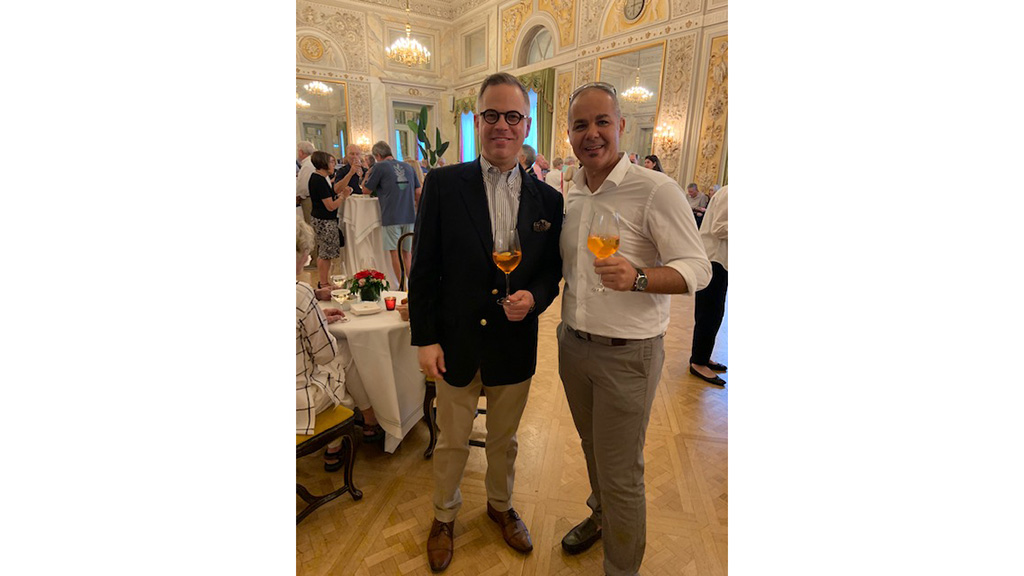
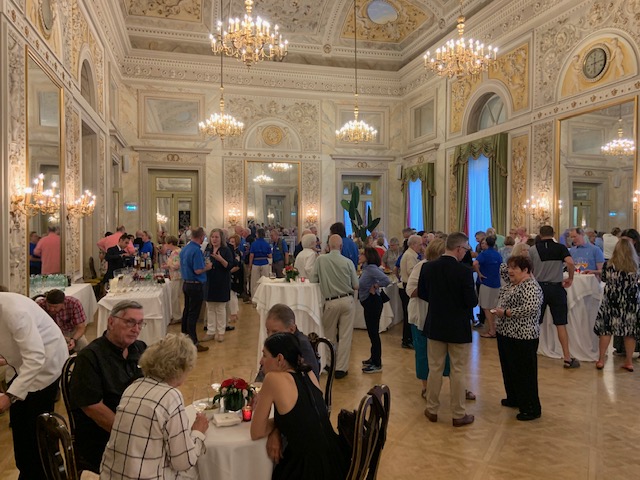
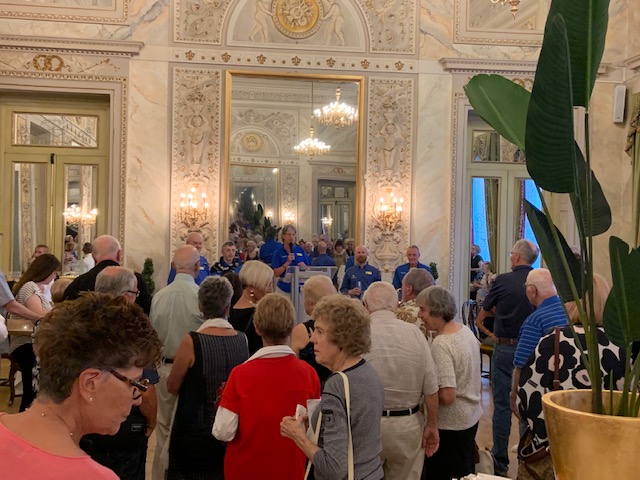








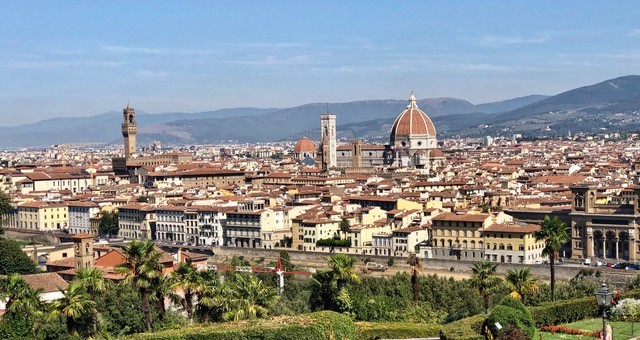
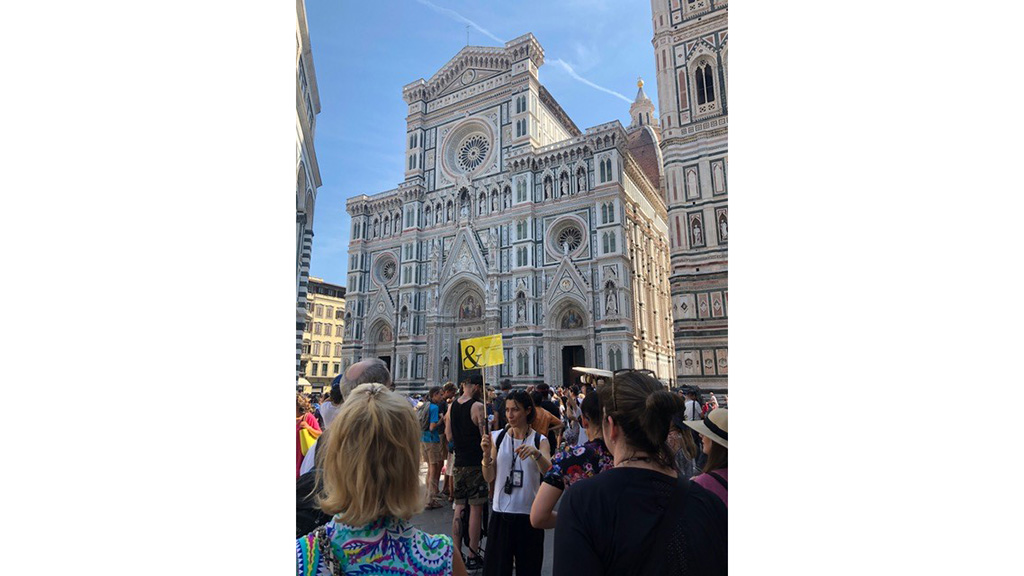
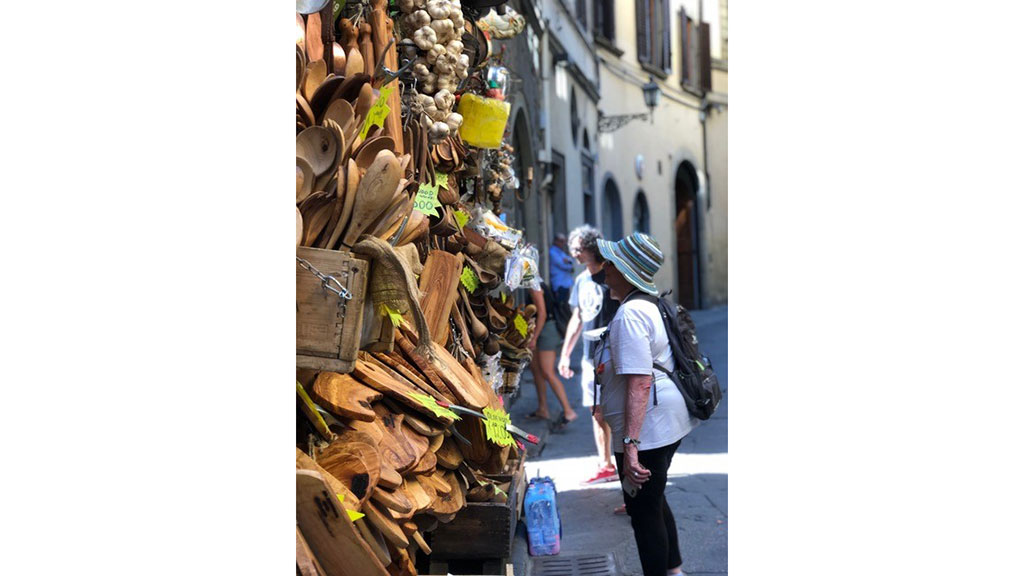
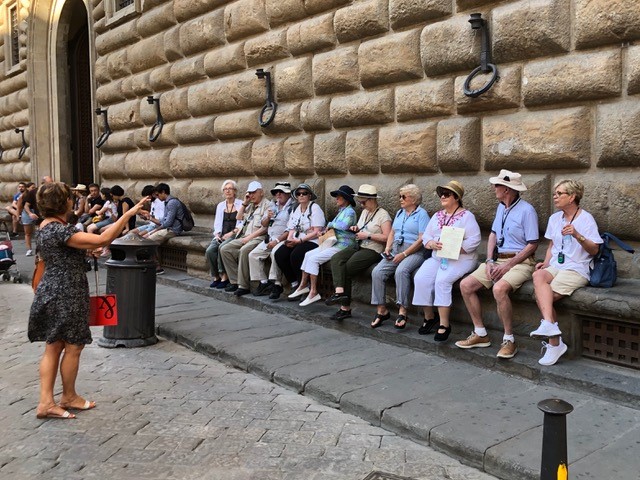
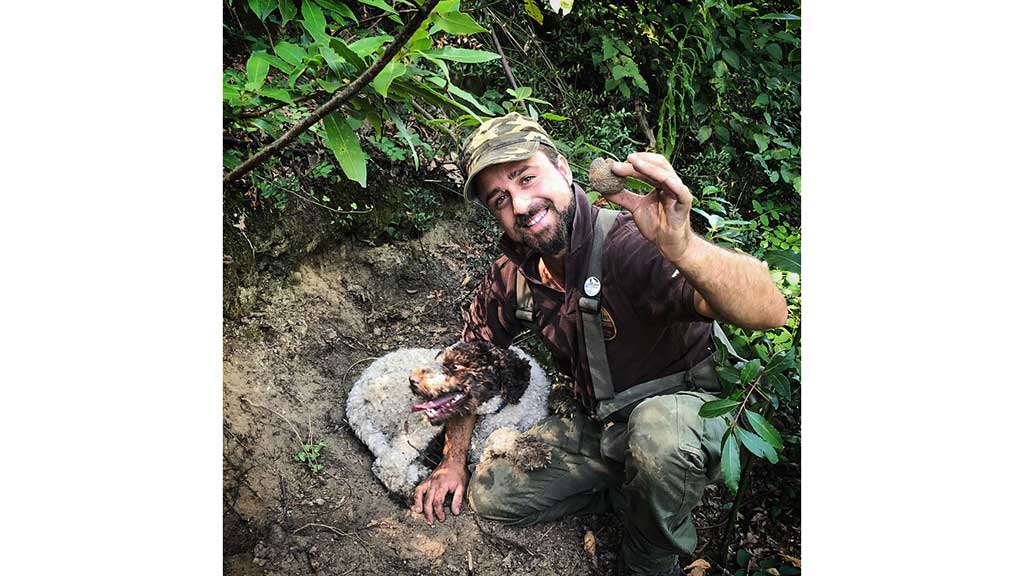
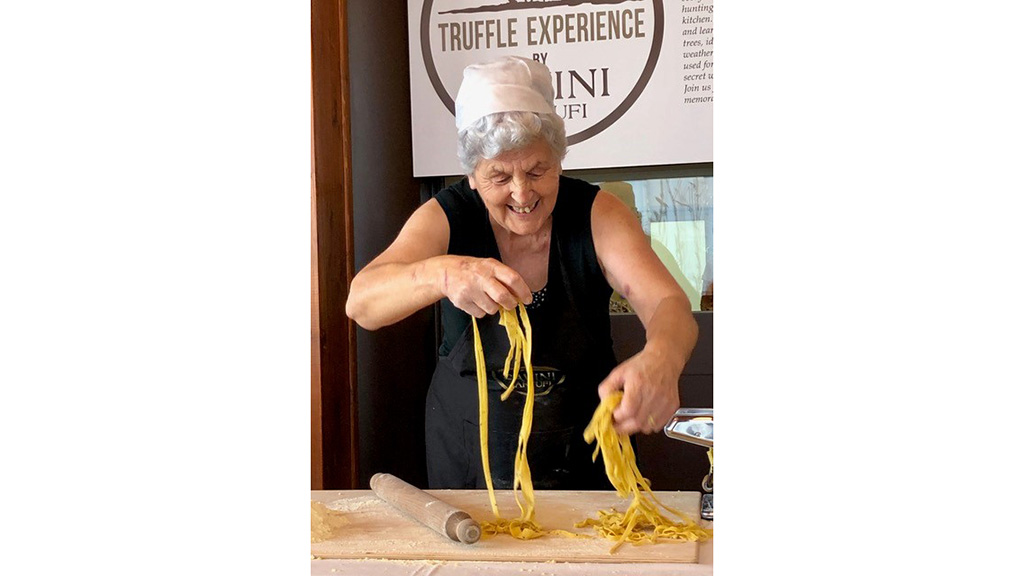
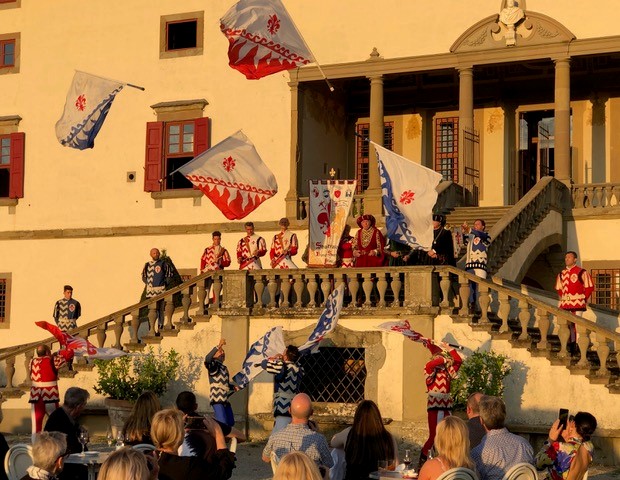
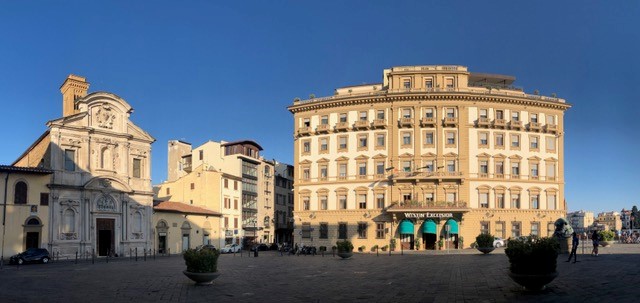





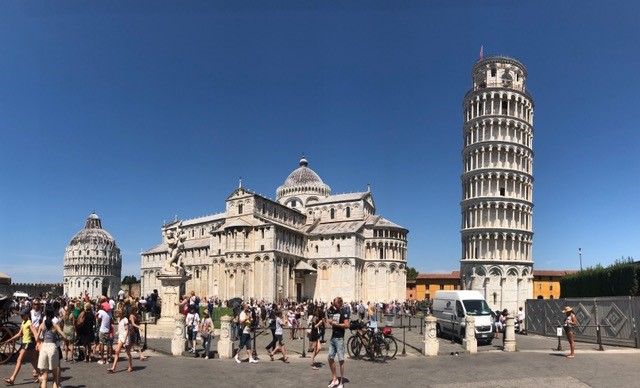
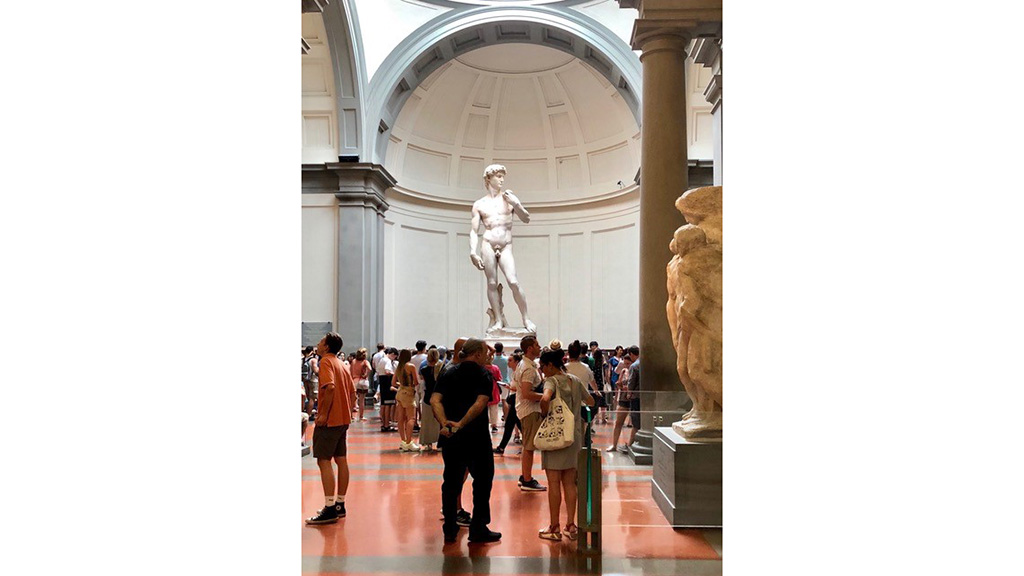
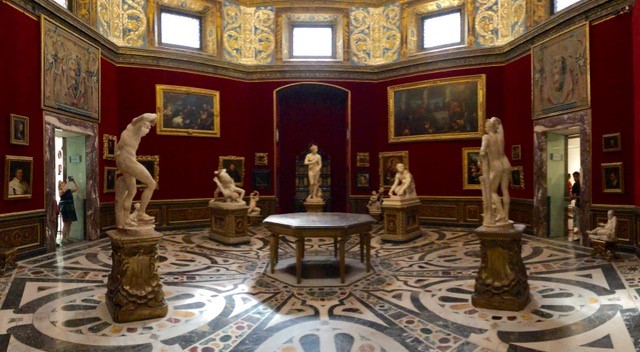
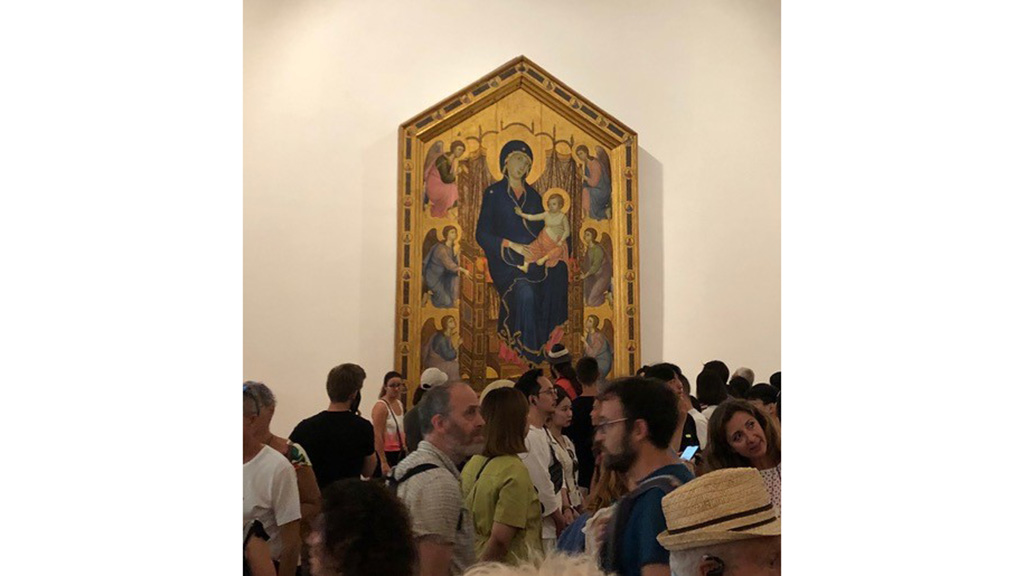
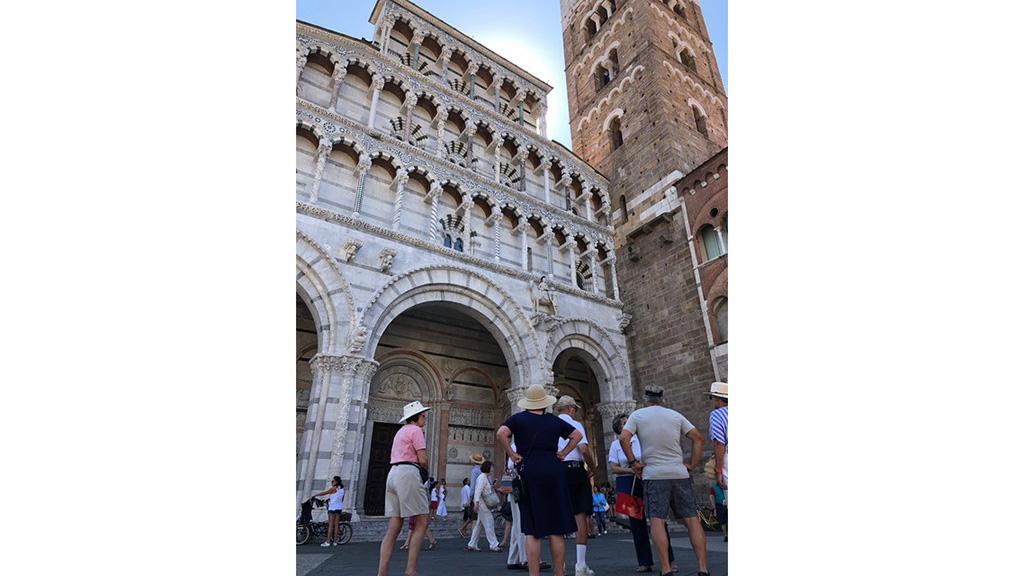








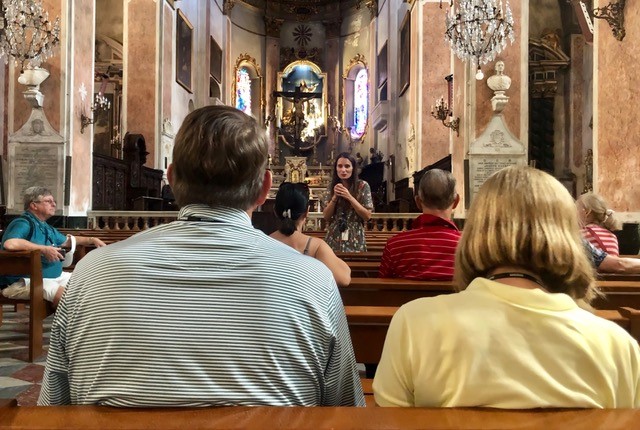
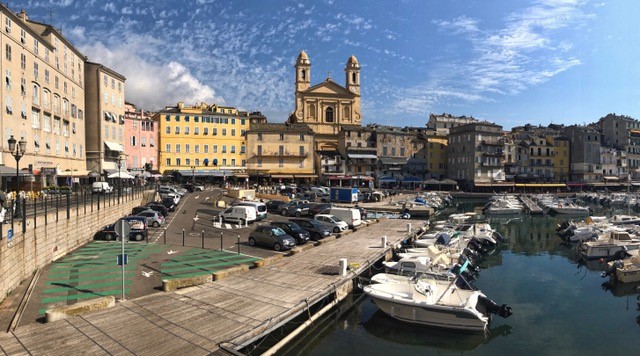
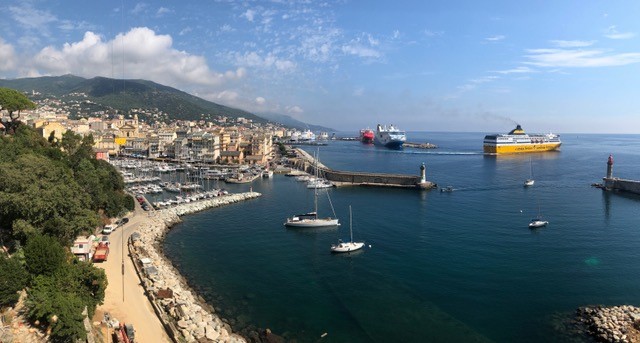
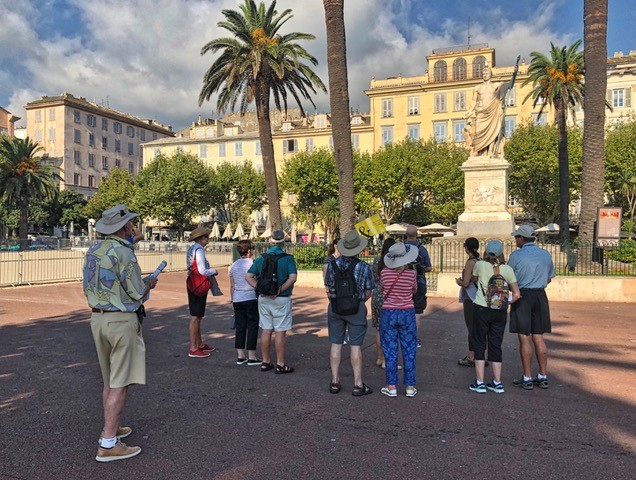
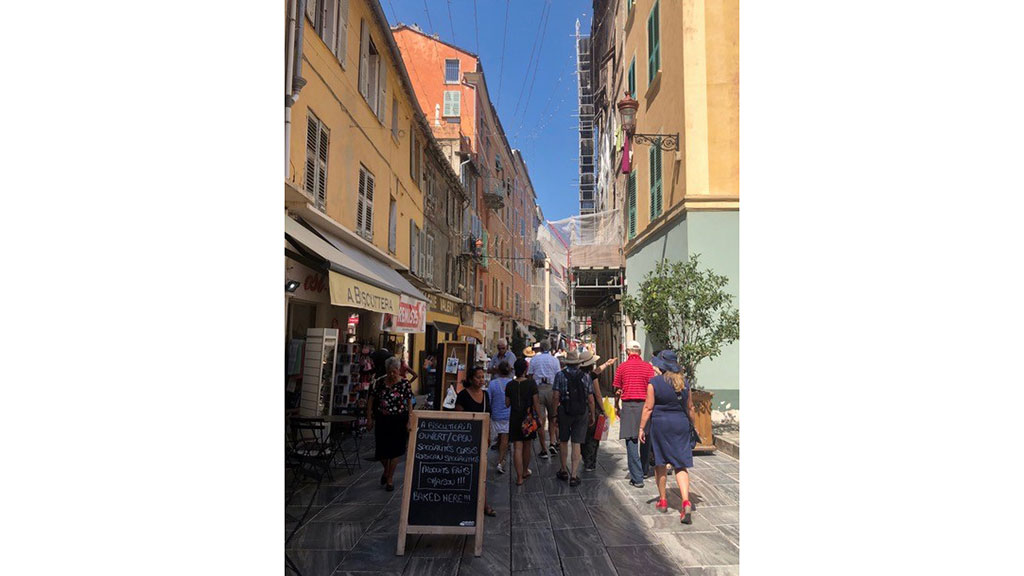
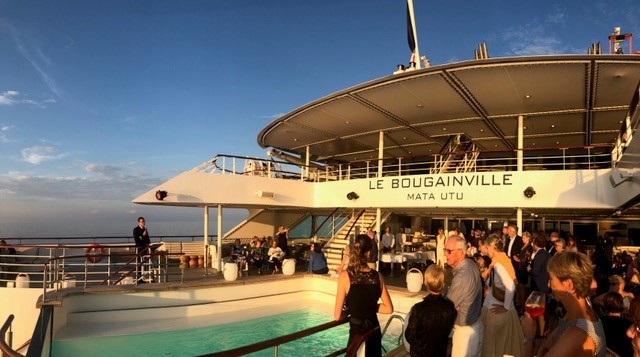
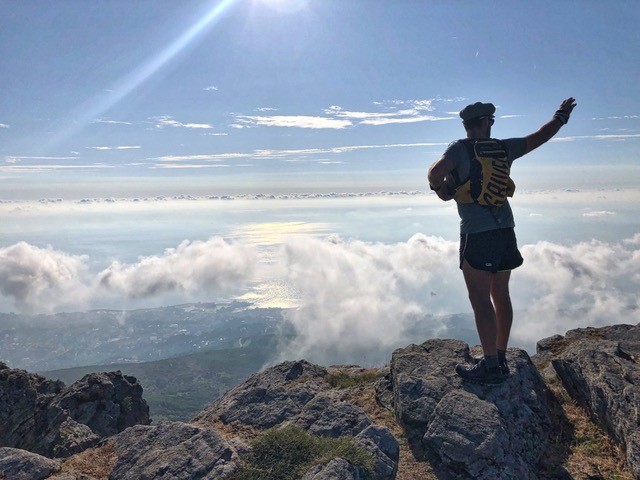
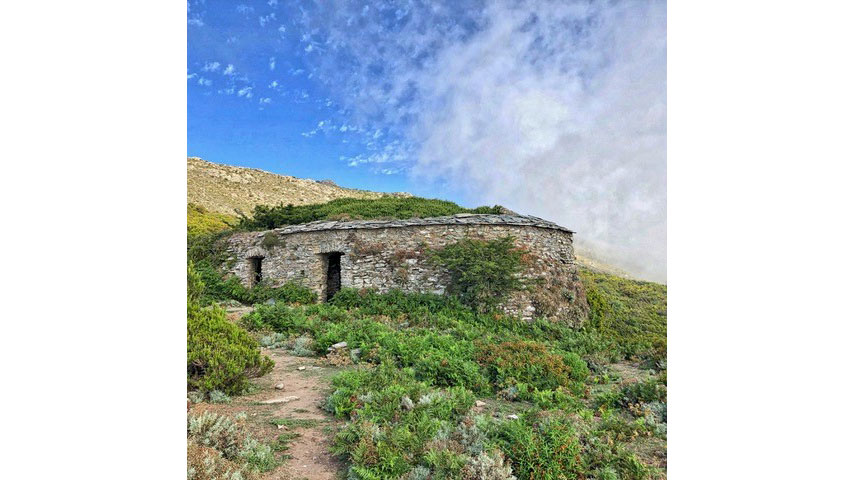








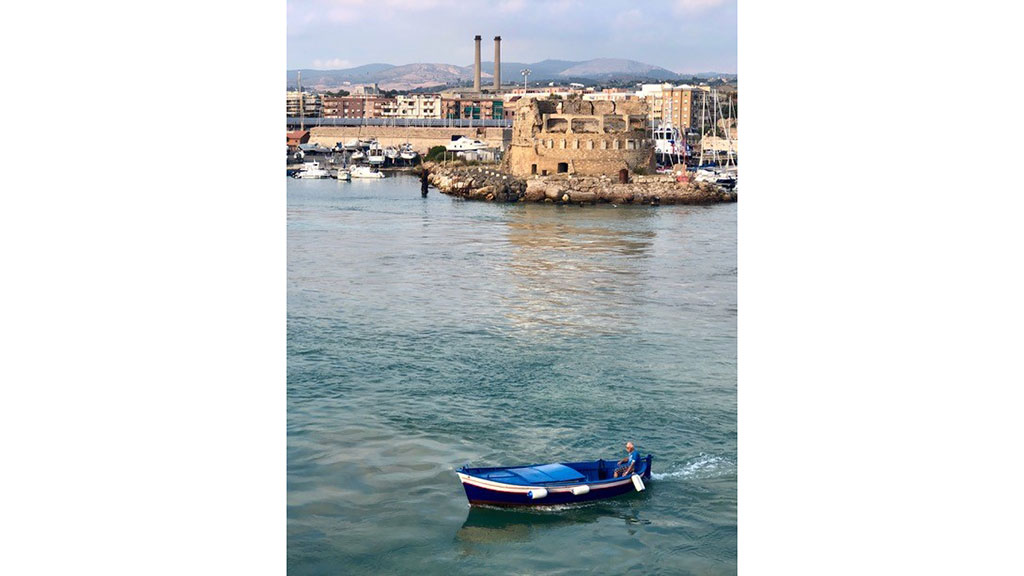
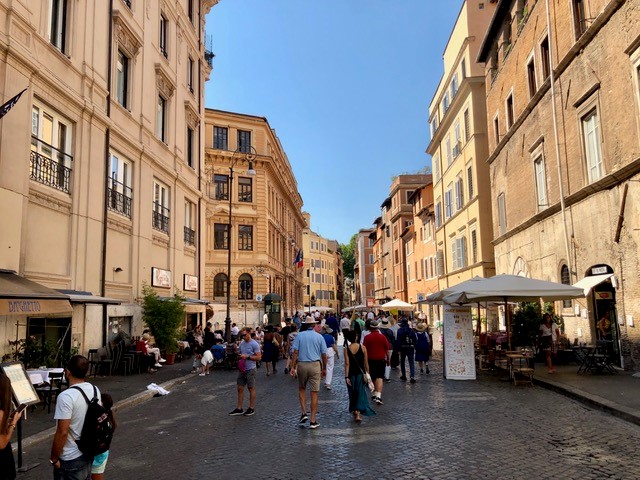
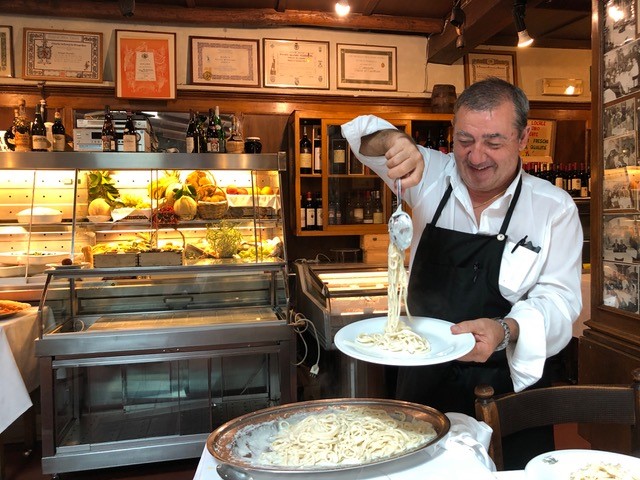
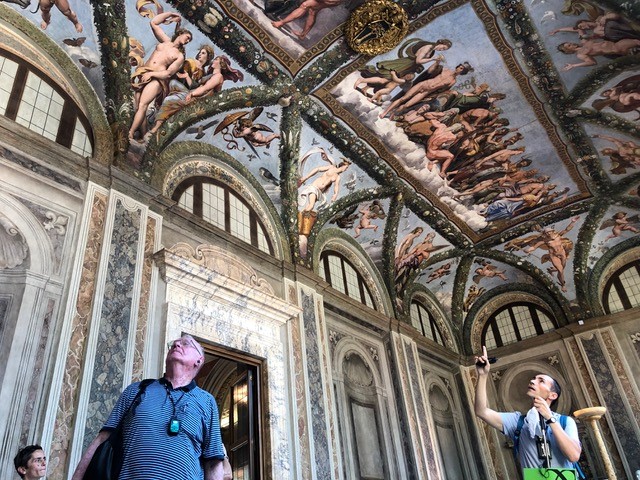
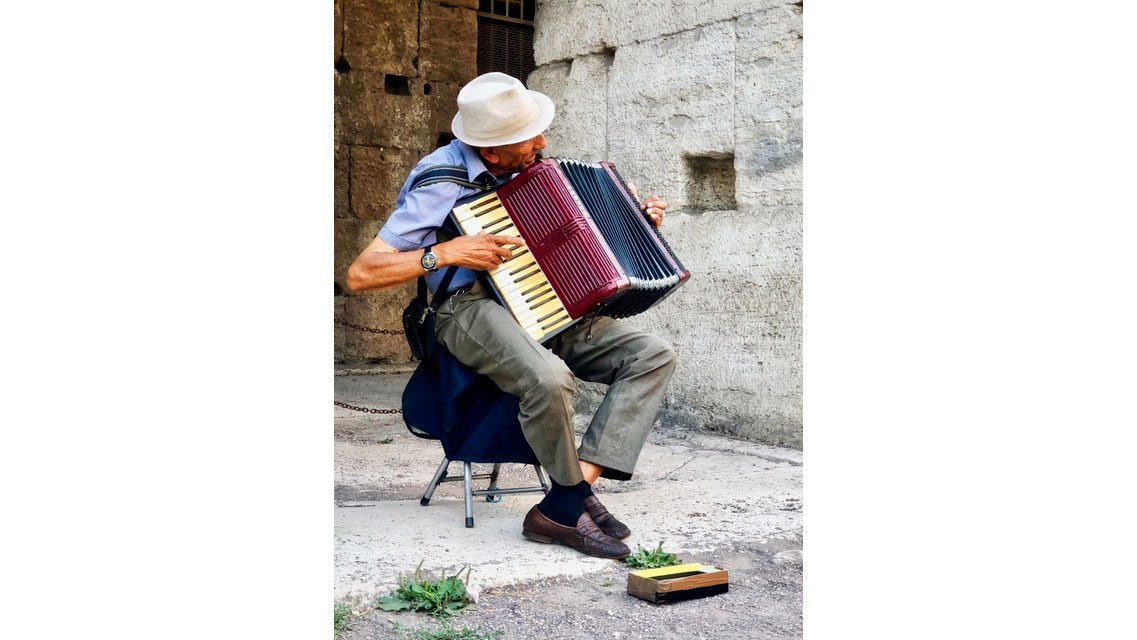
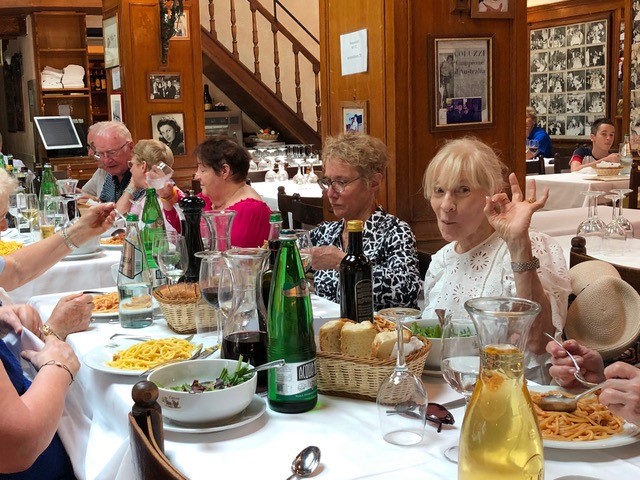

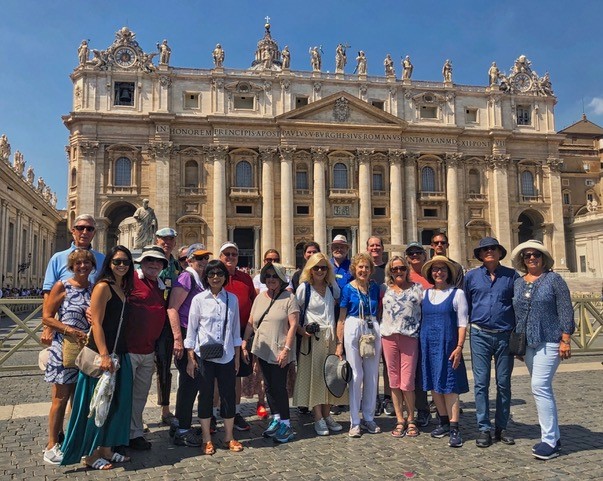




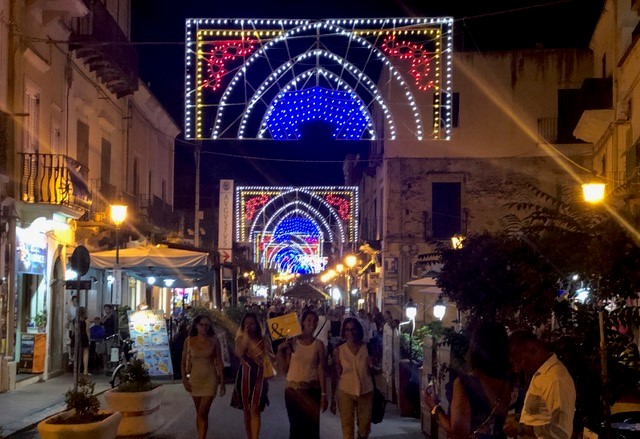
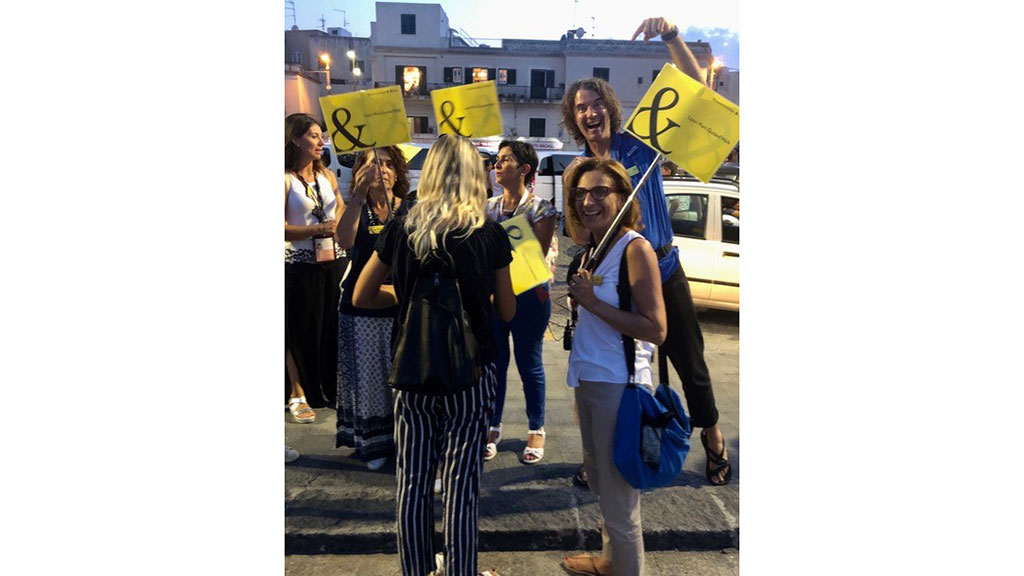
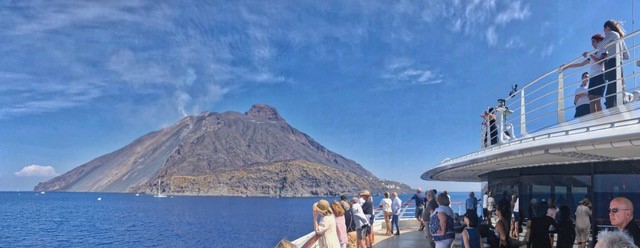
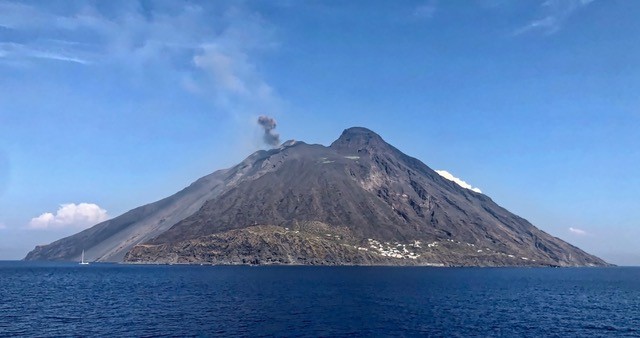










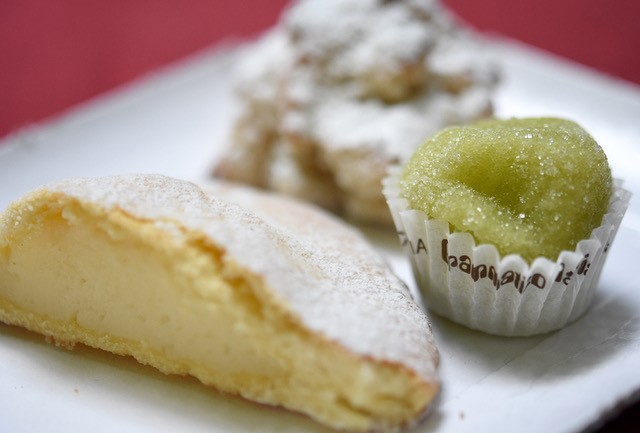
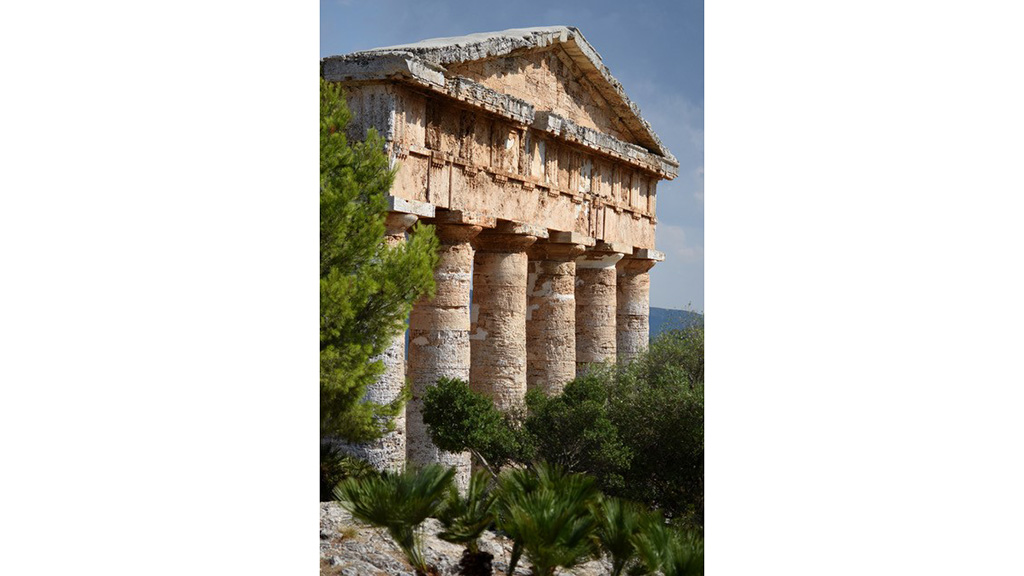
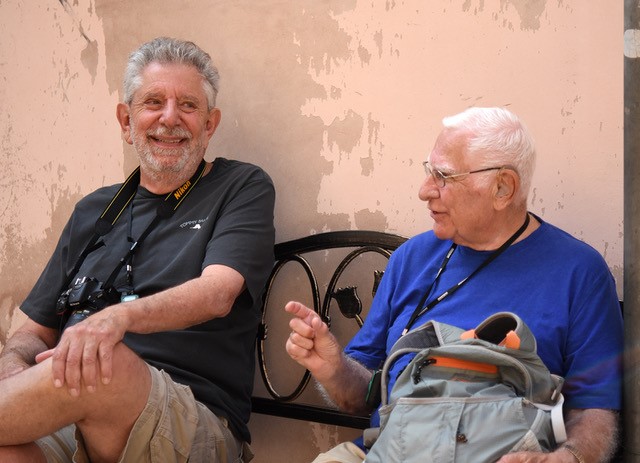
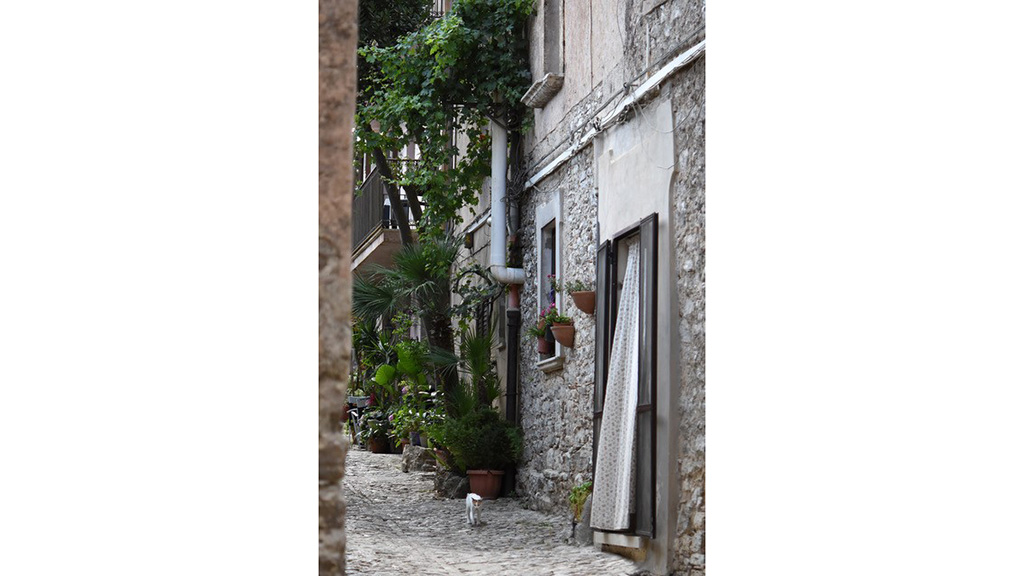
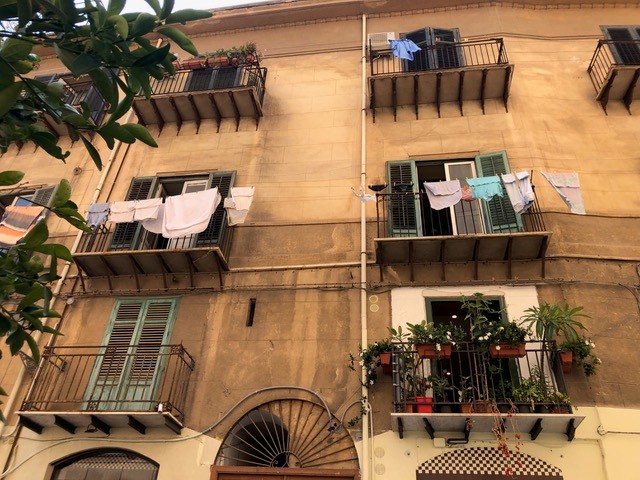
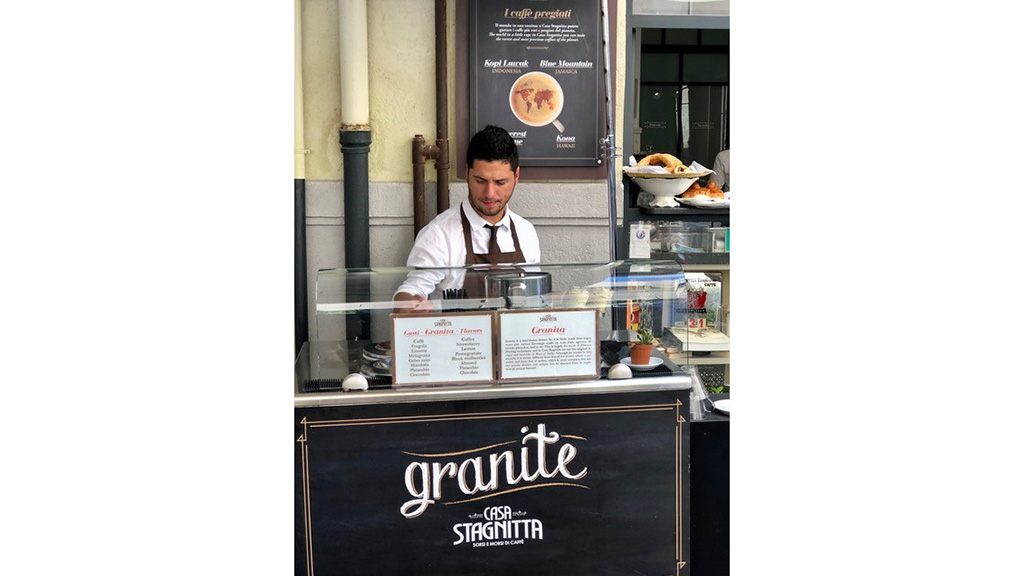
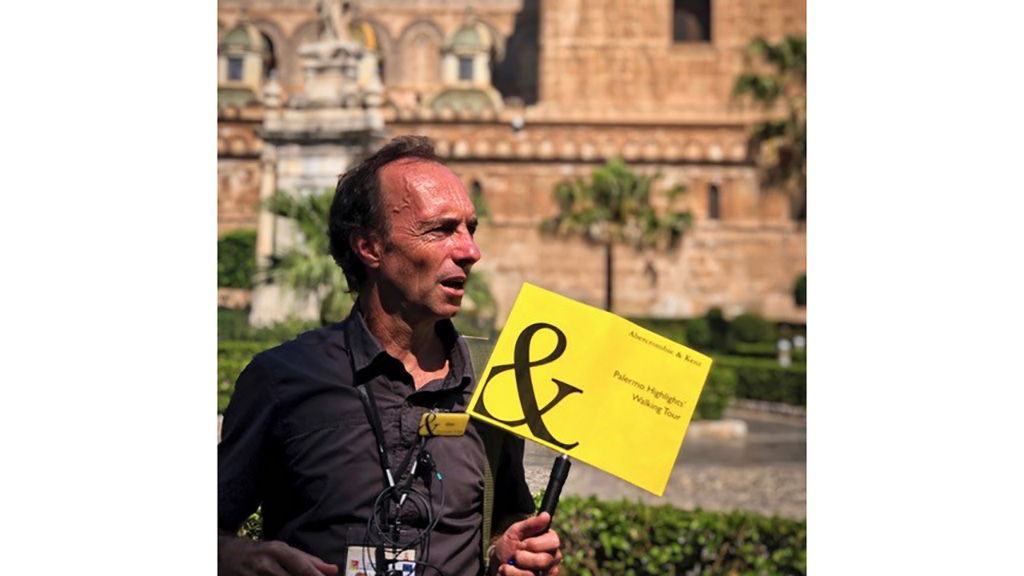
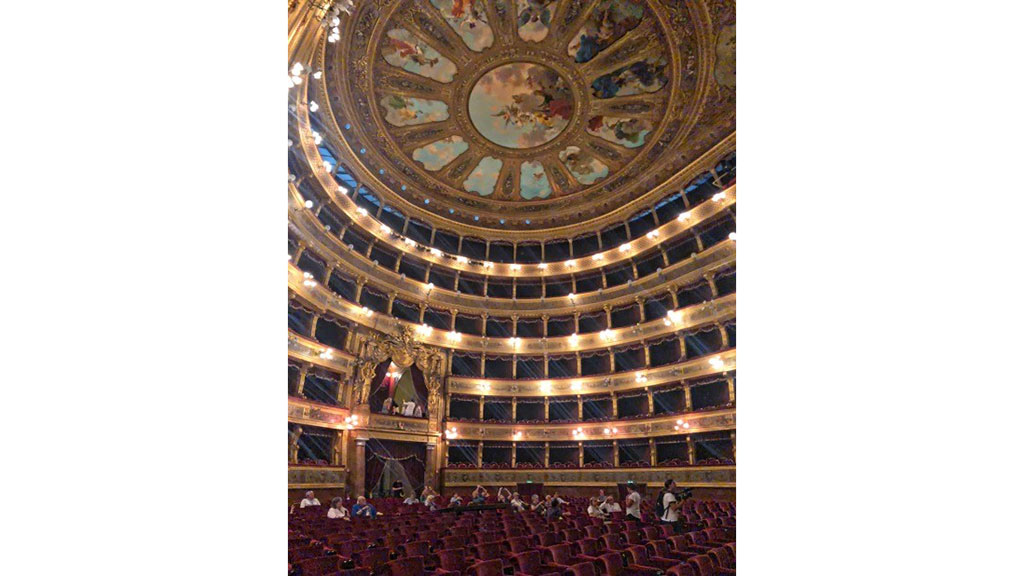
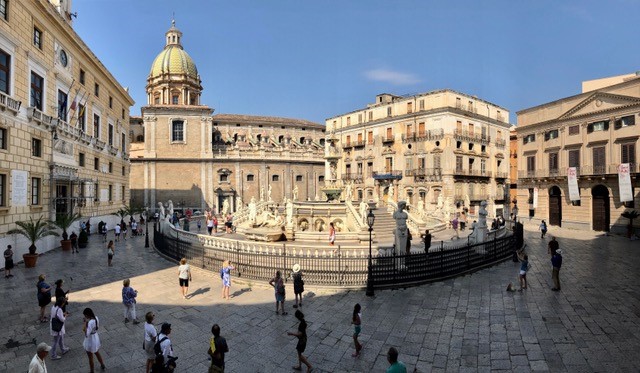
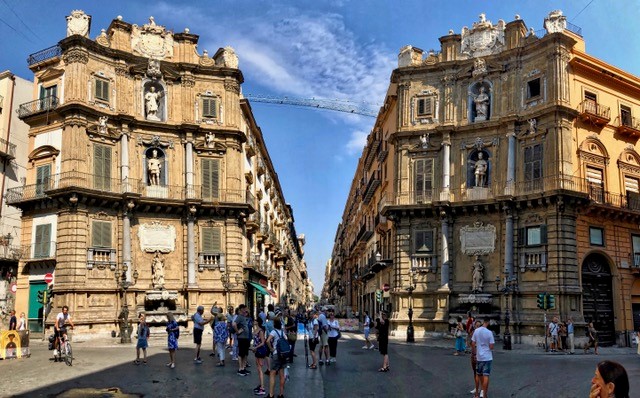











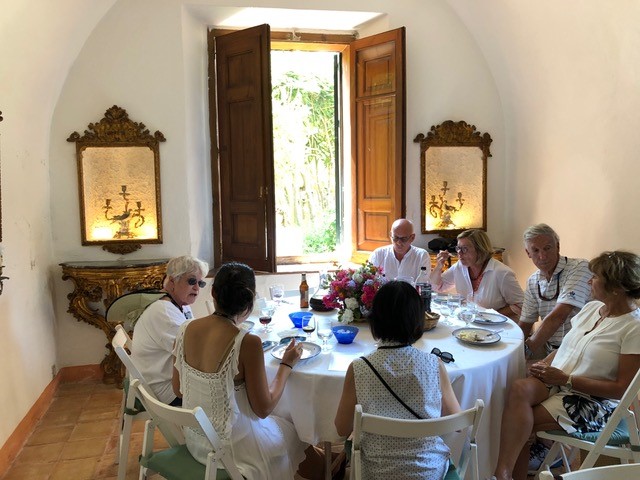
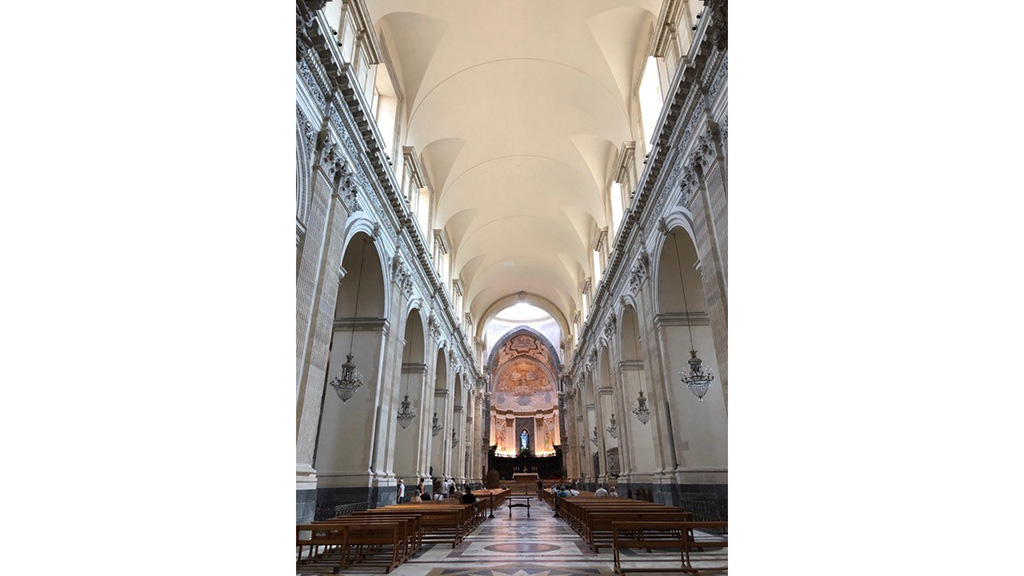
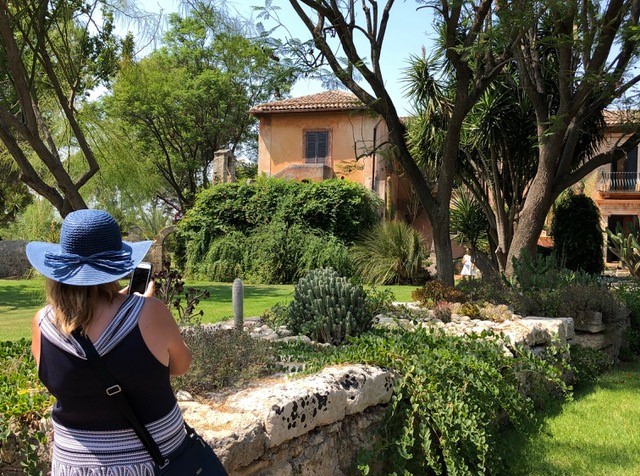
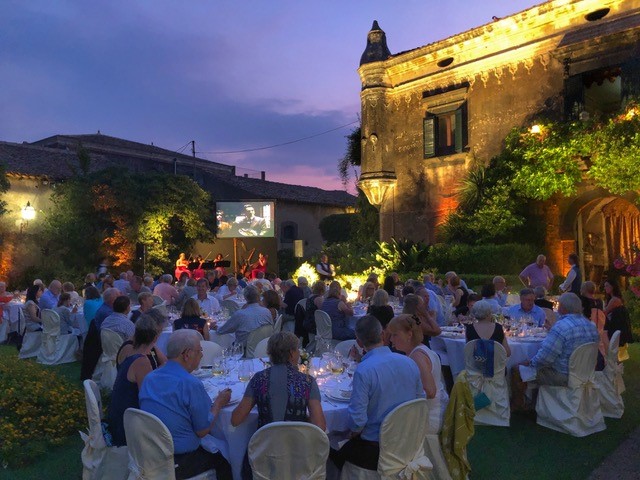
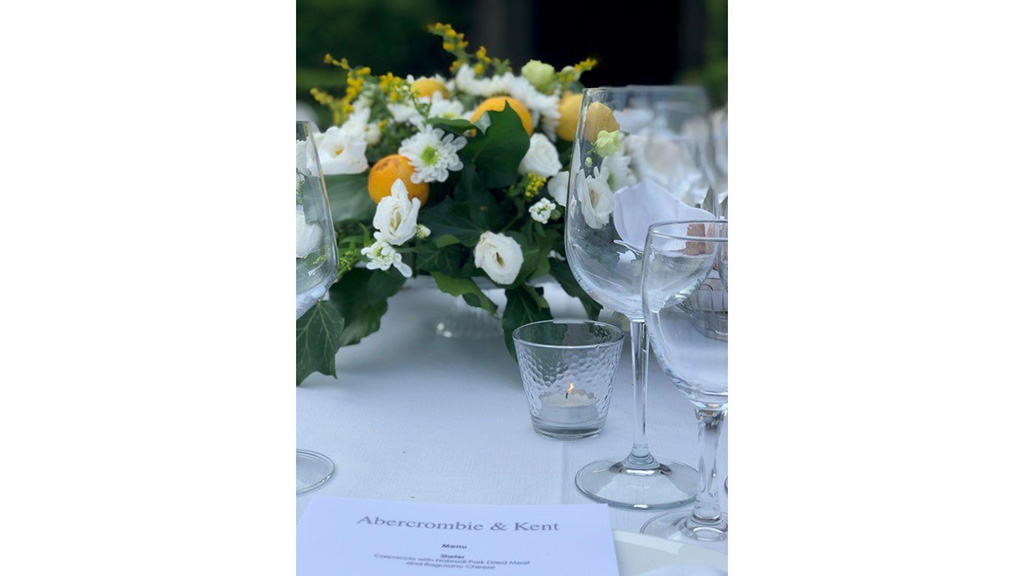
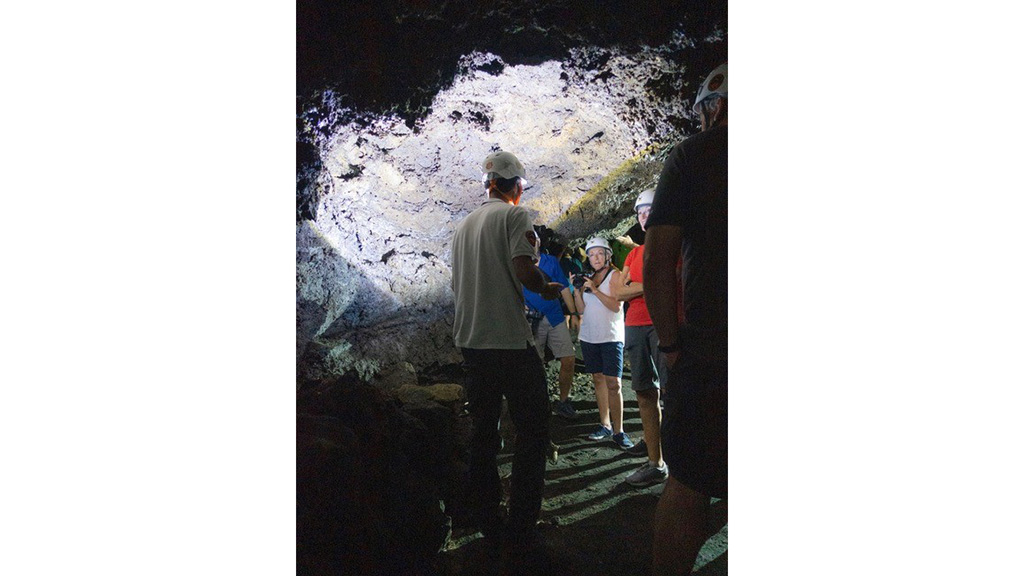
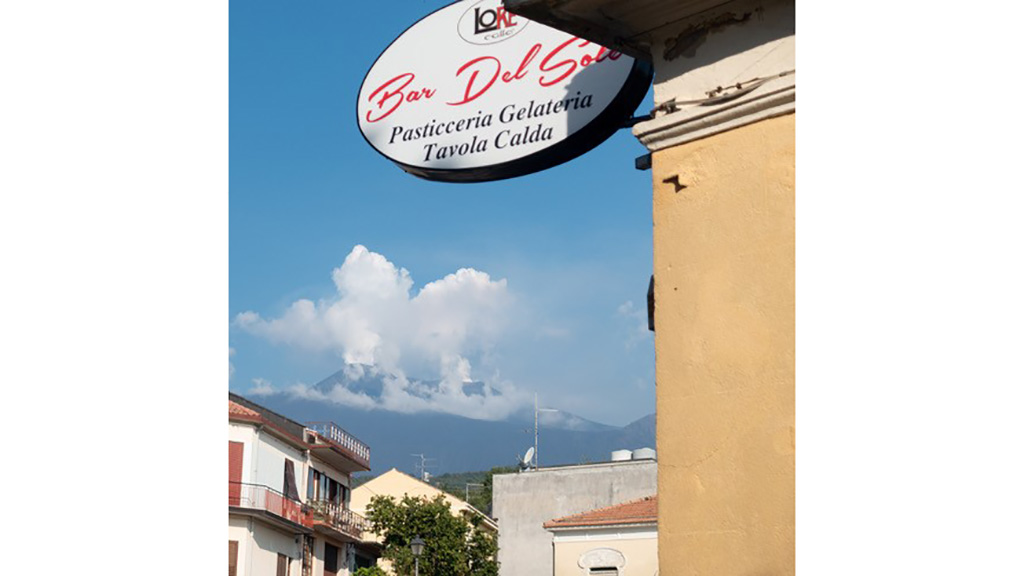
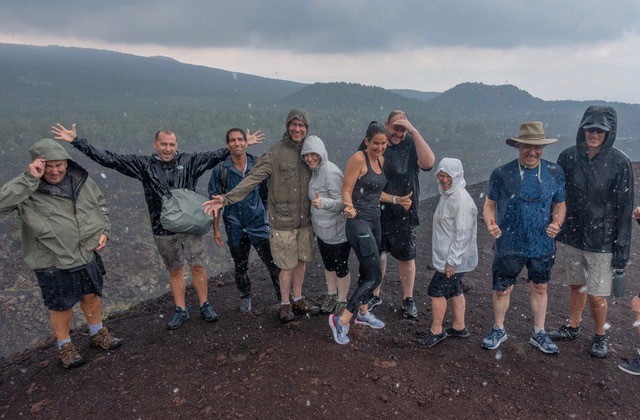
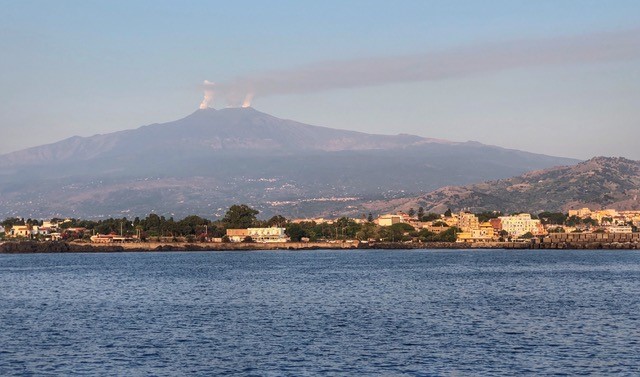
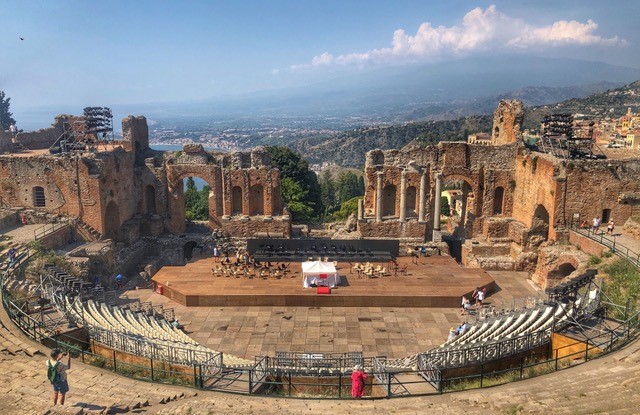
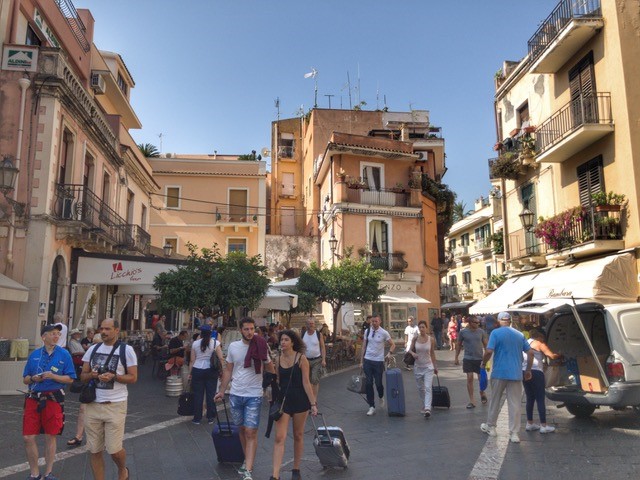




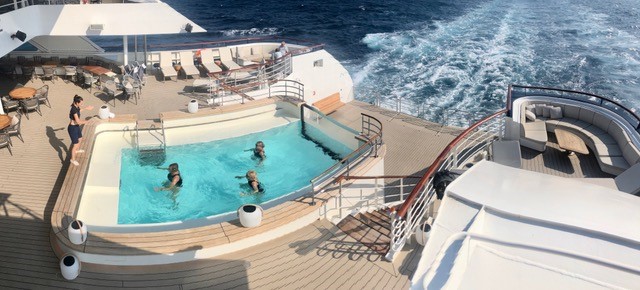
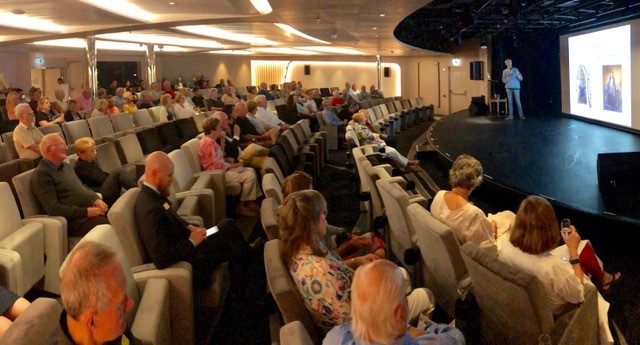
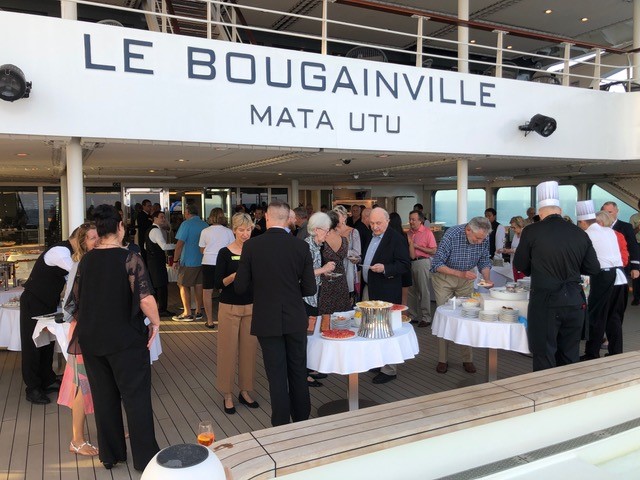
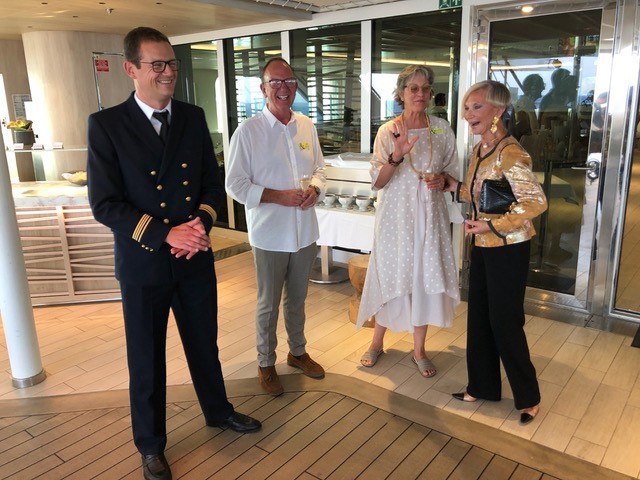










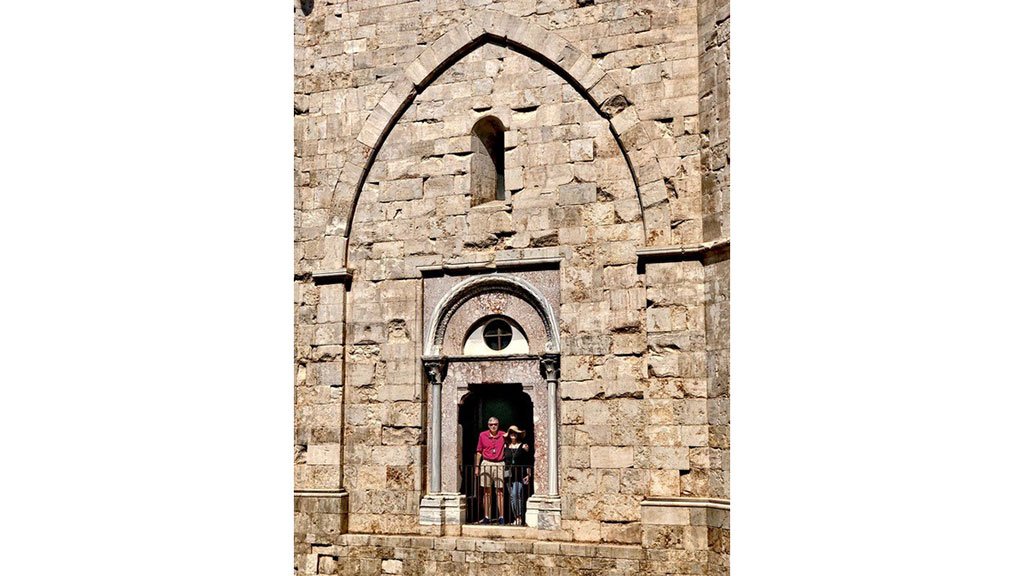
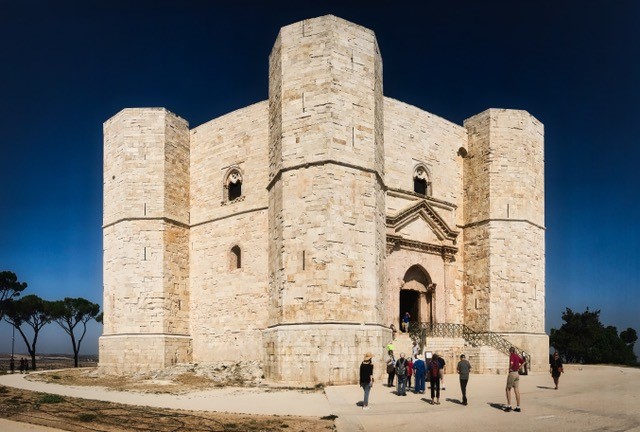
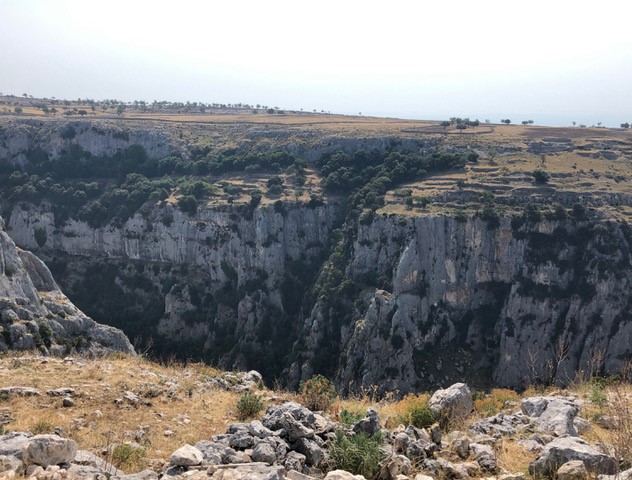
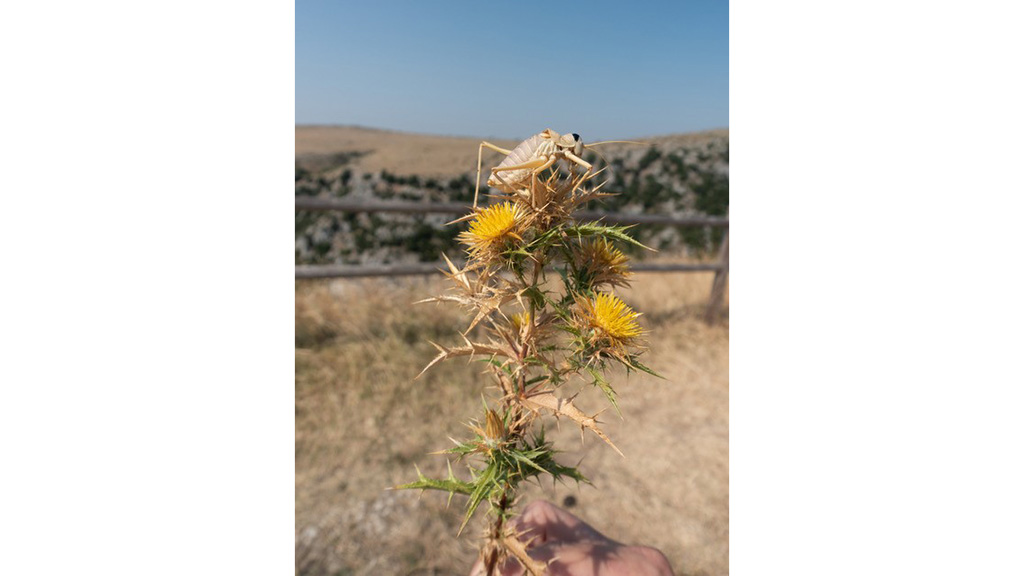
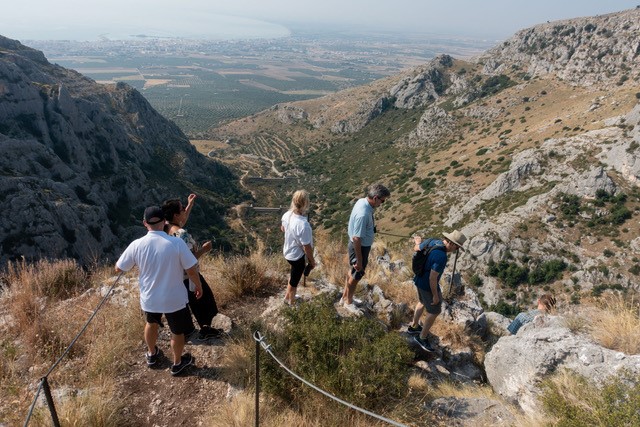
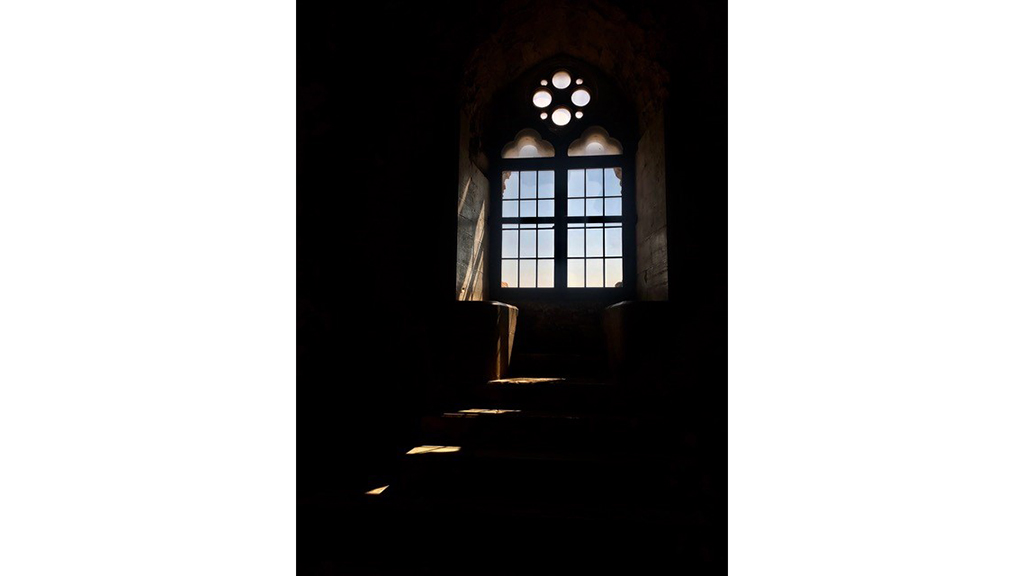
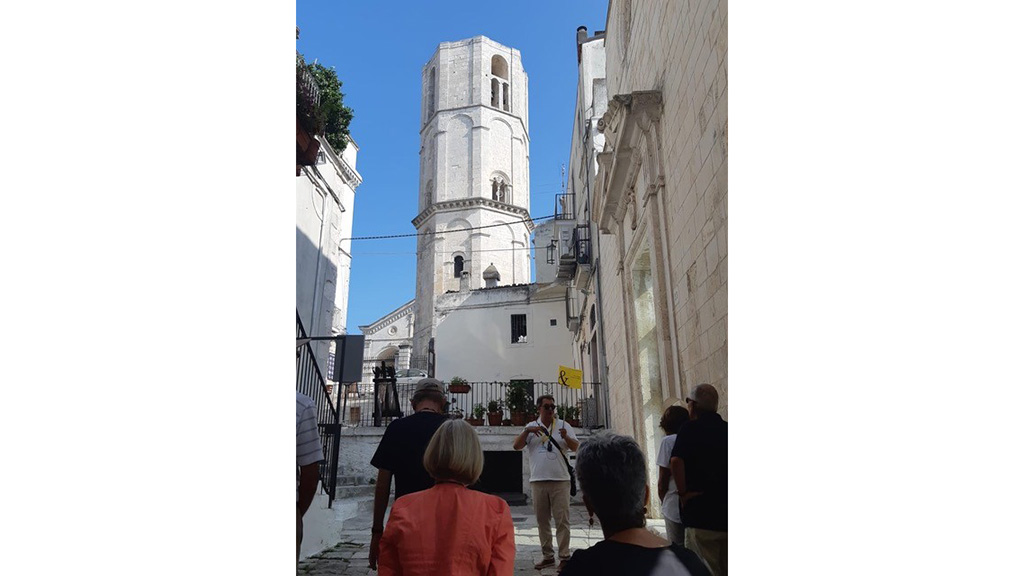
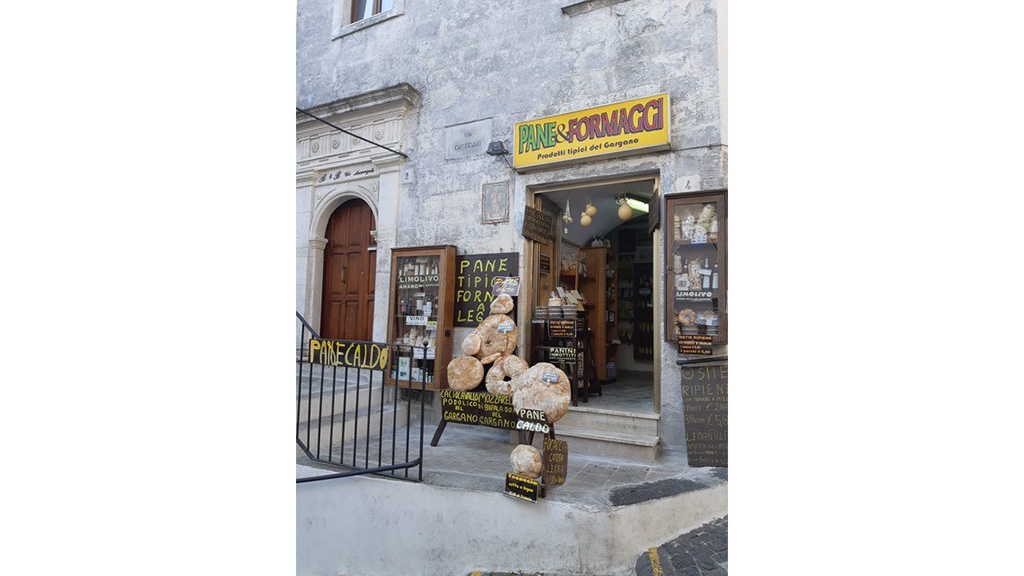
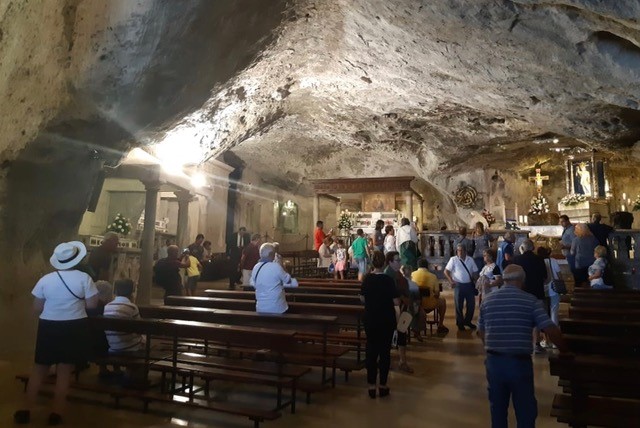
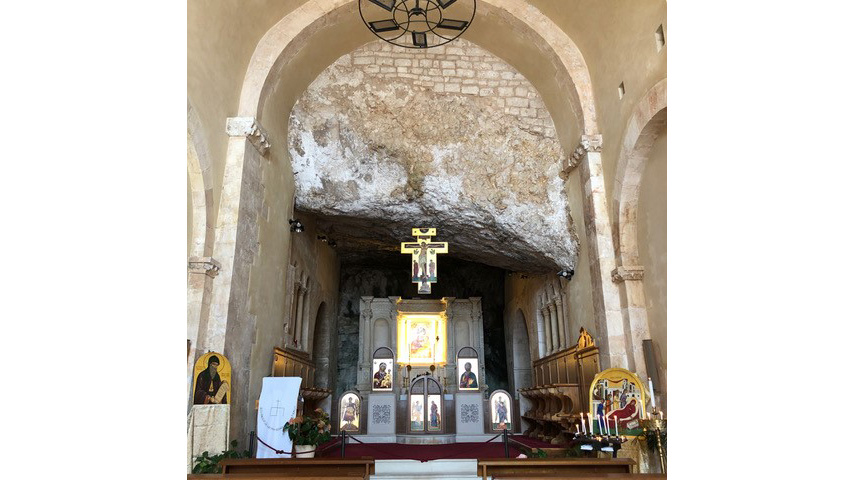










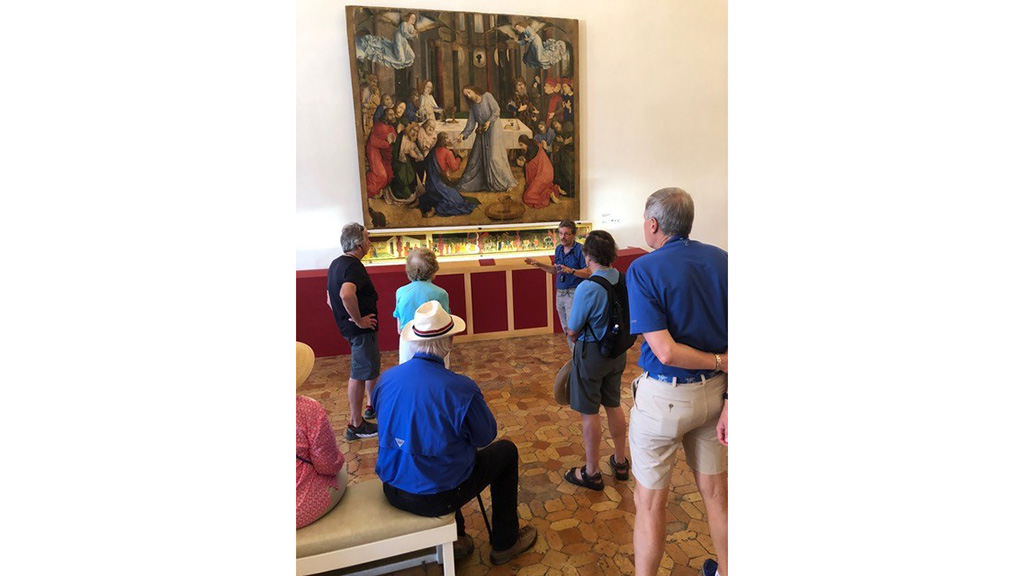
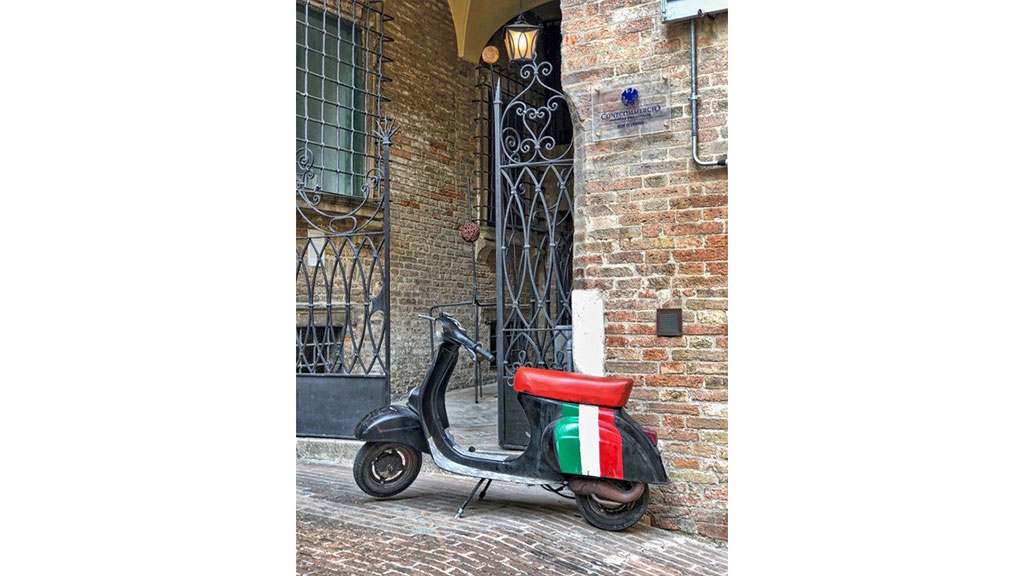
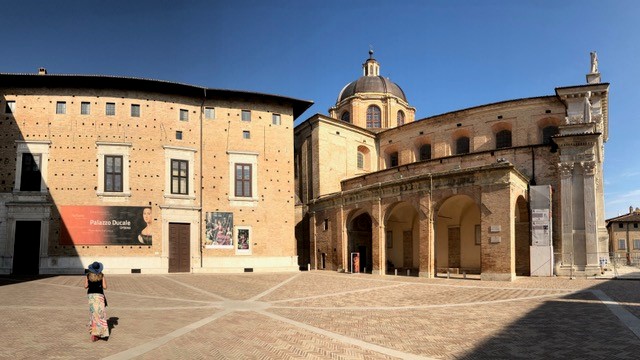
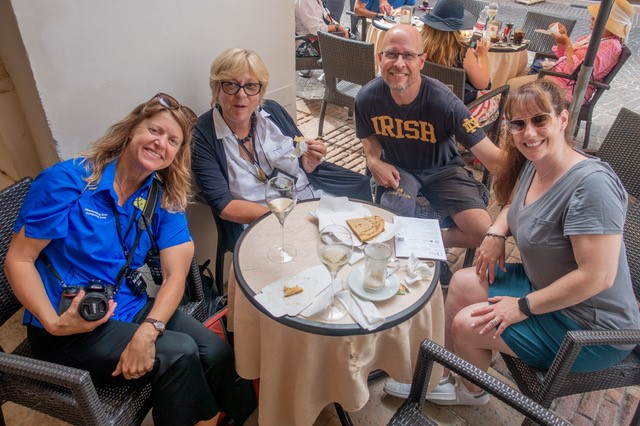
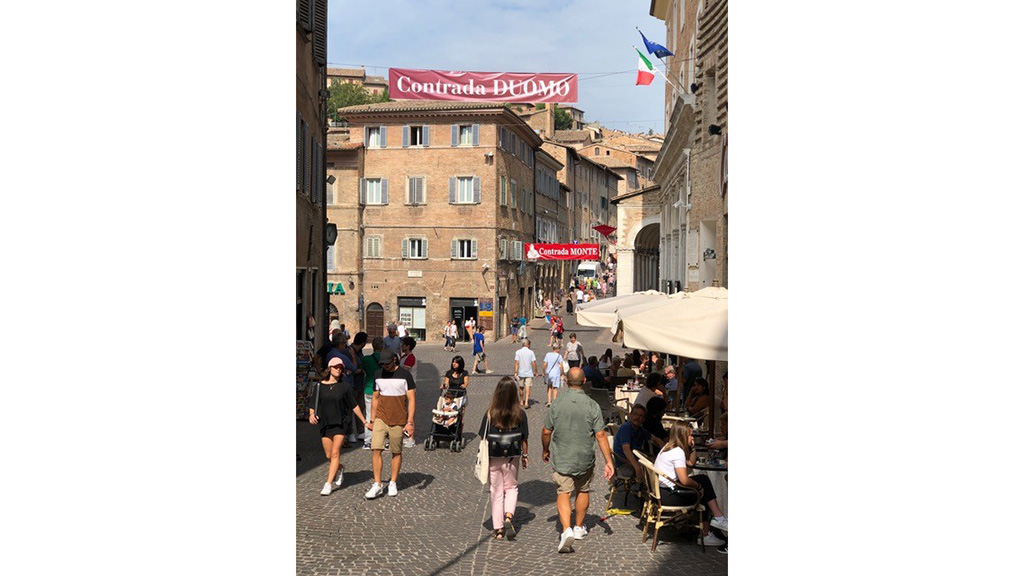
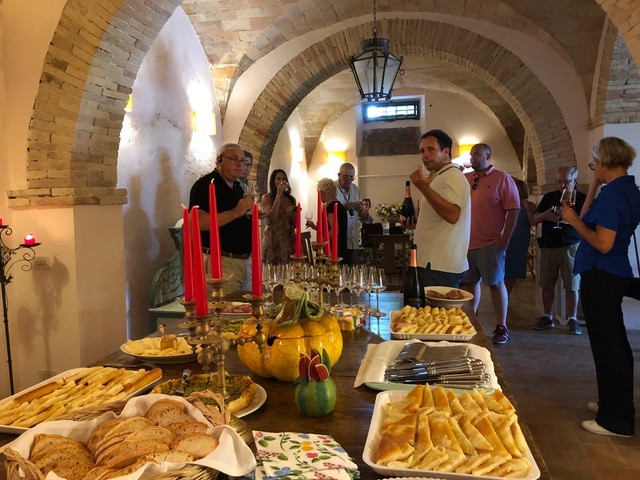
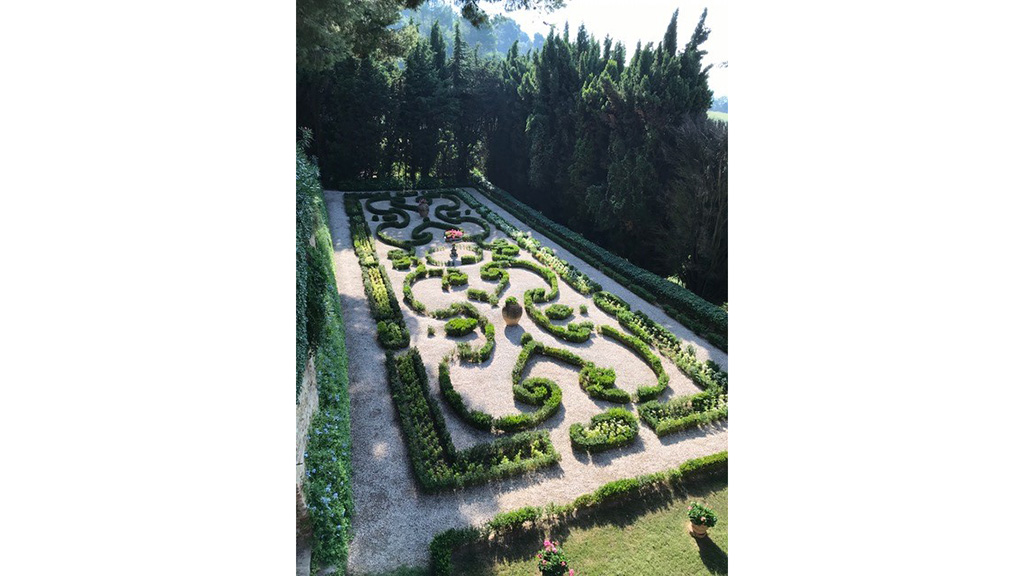
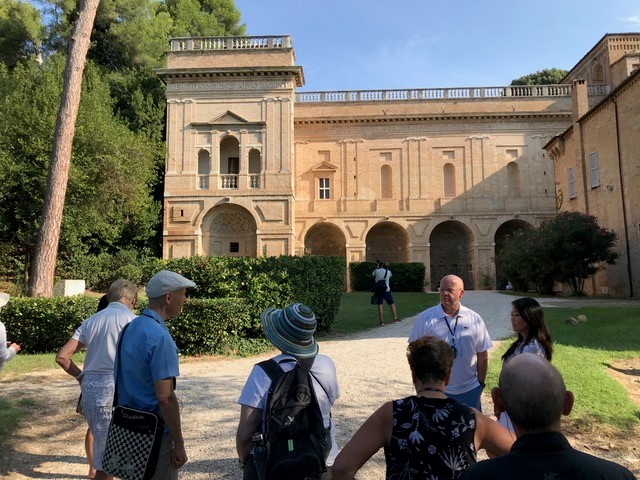
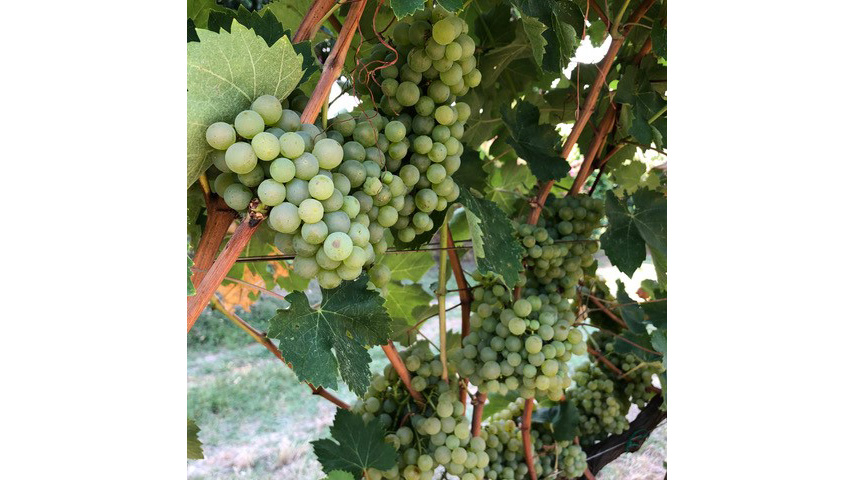
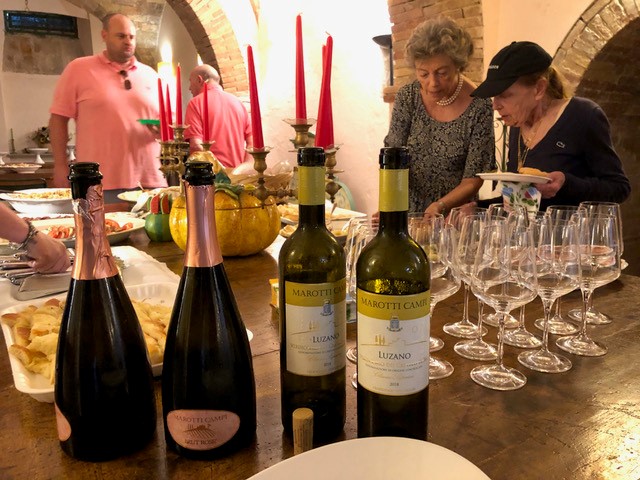










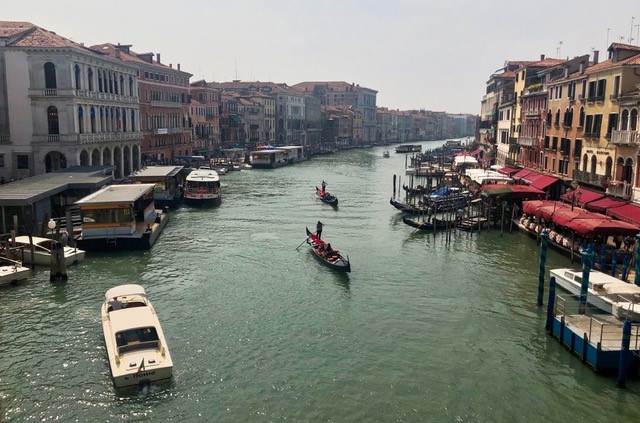
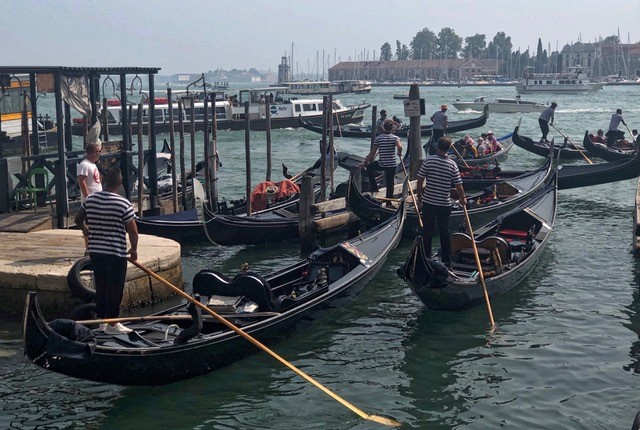
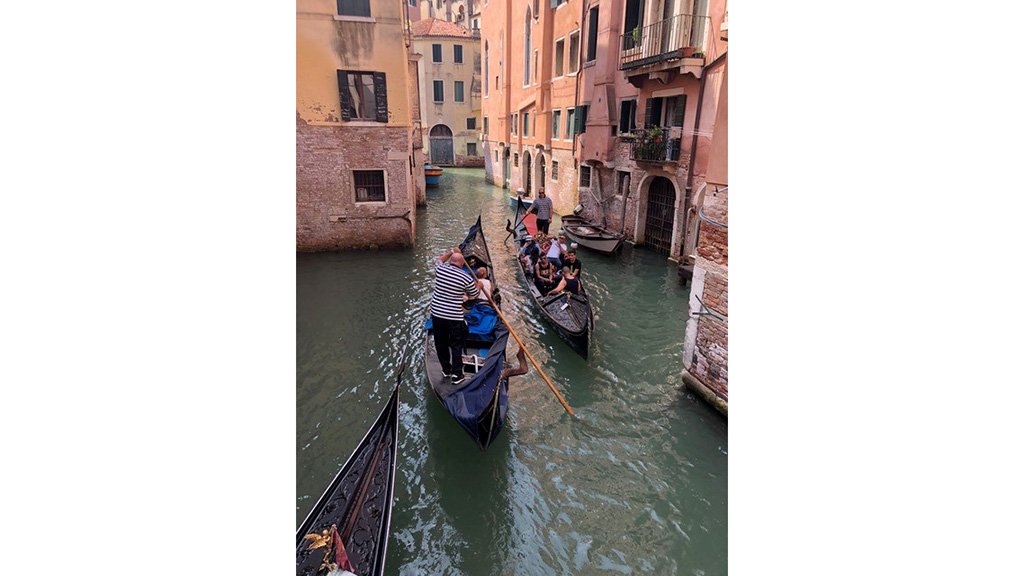
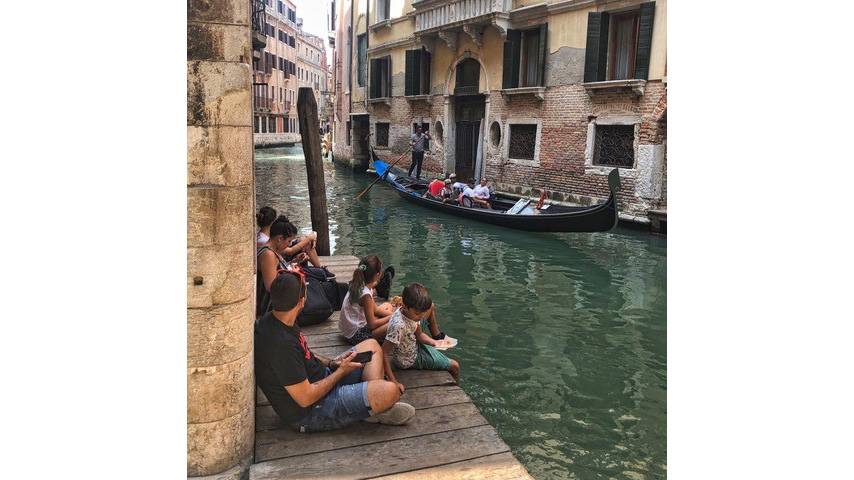
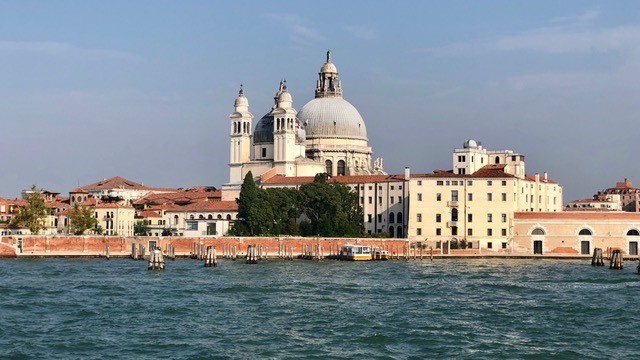
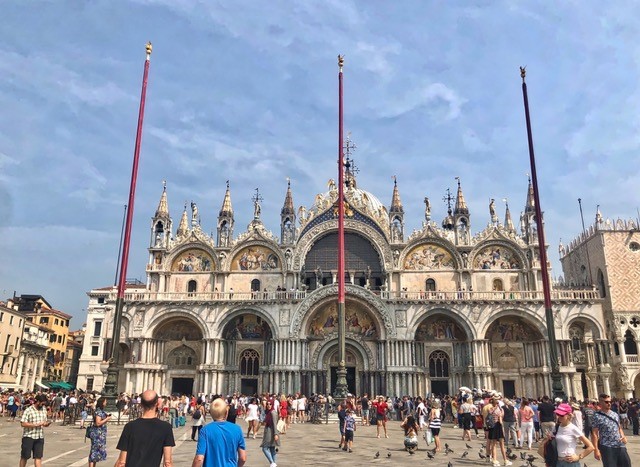
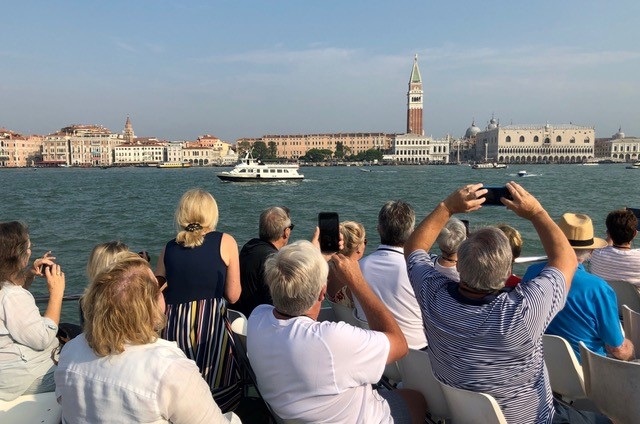
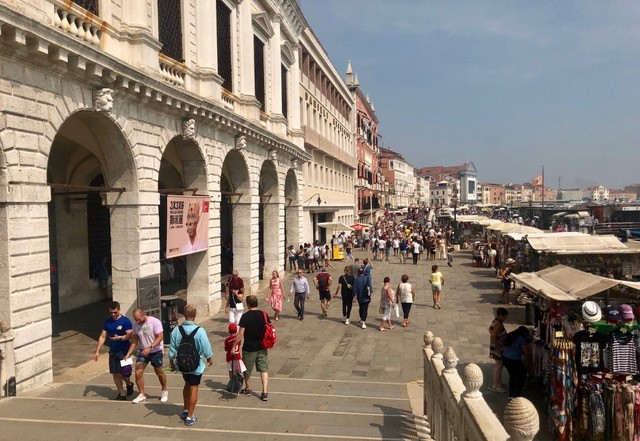
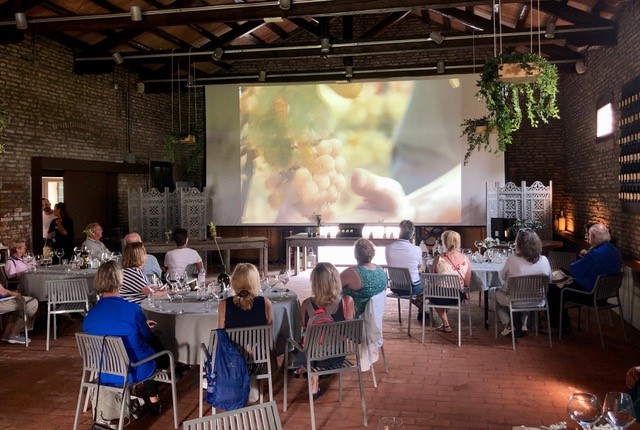
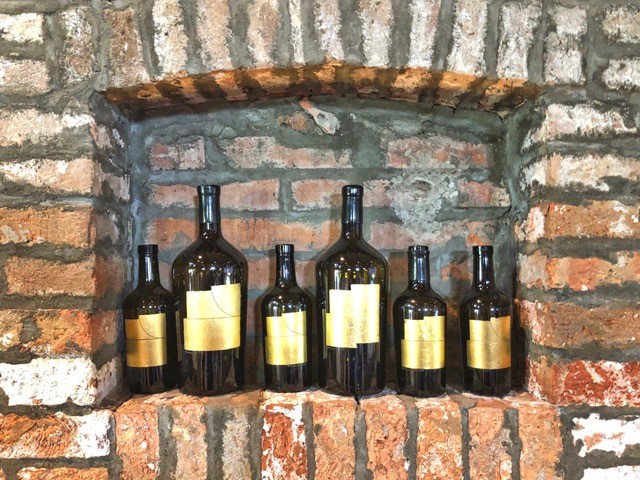

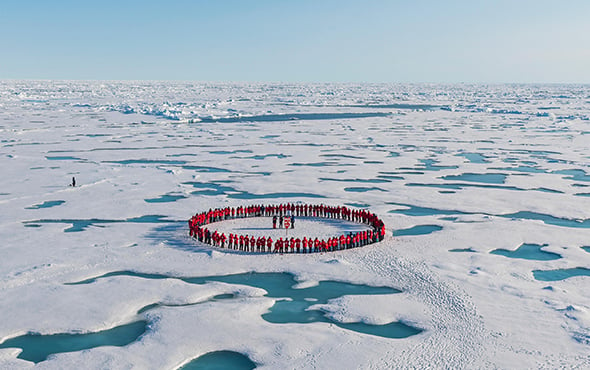
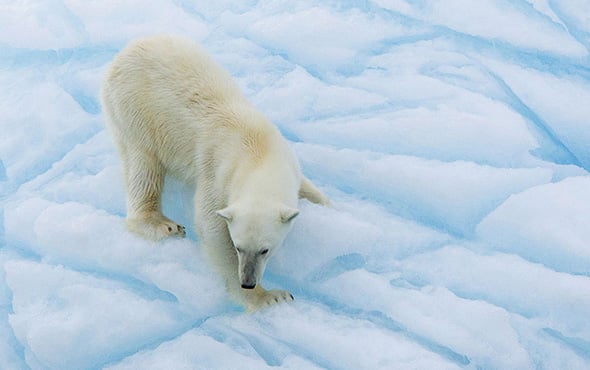
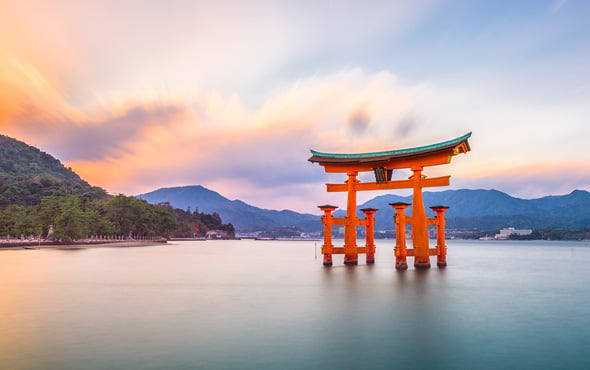


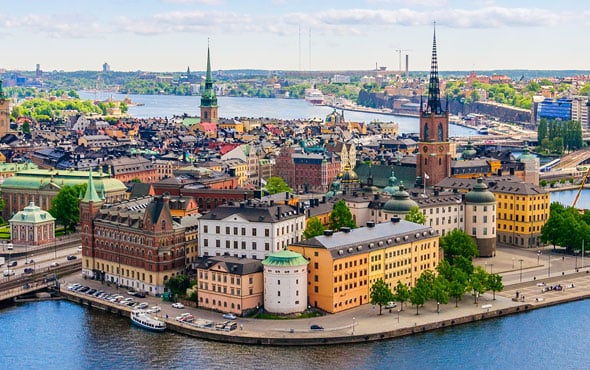

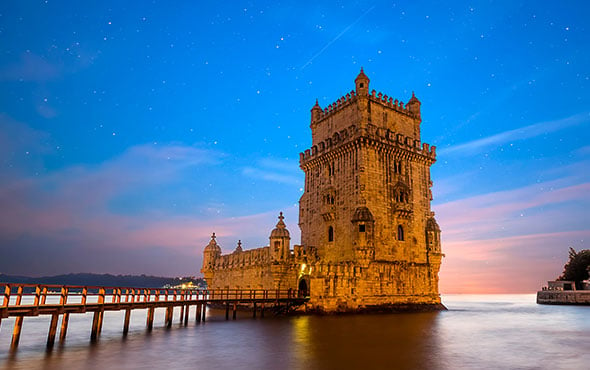

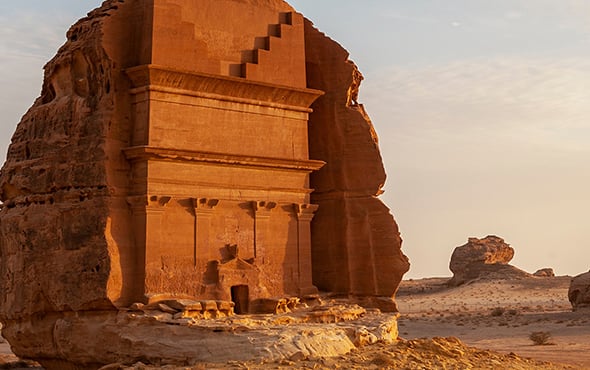
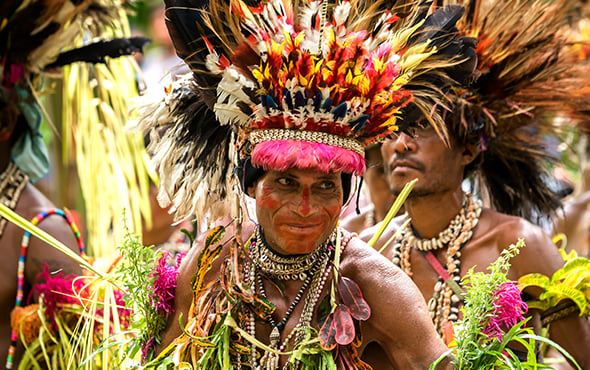
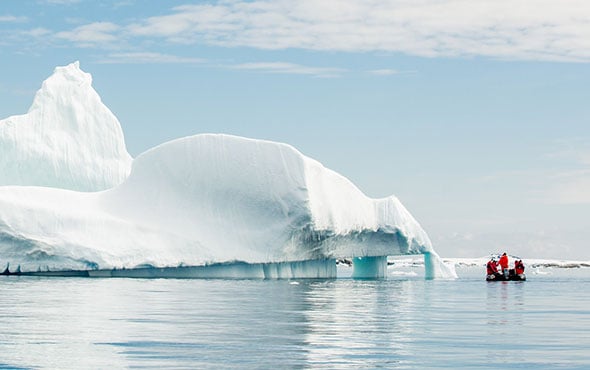
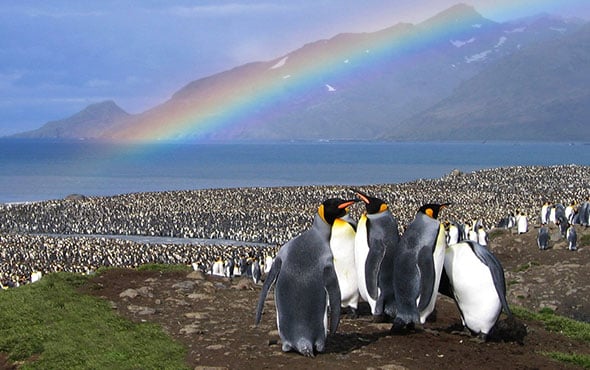
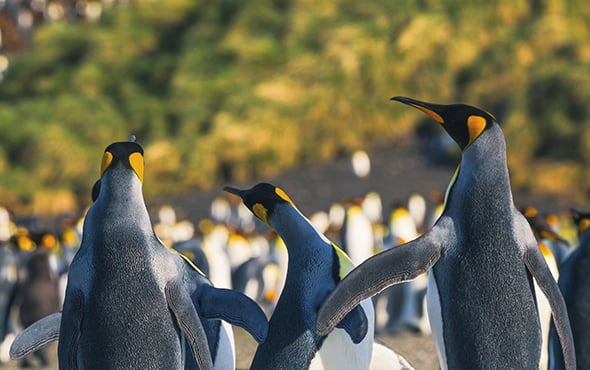



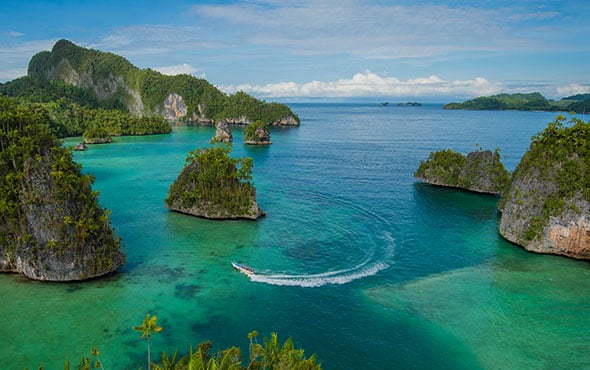
 The Americas
The Americas
 Europe, Middle East and Africa
Europe, Middle East and Africa Australia, NZ and SE Asia
Australia, NZ and SE Asia